#Jargon brand officially online store
Text
Sting Tail Trans!!!
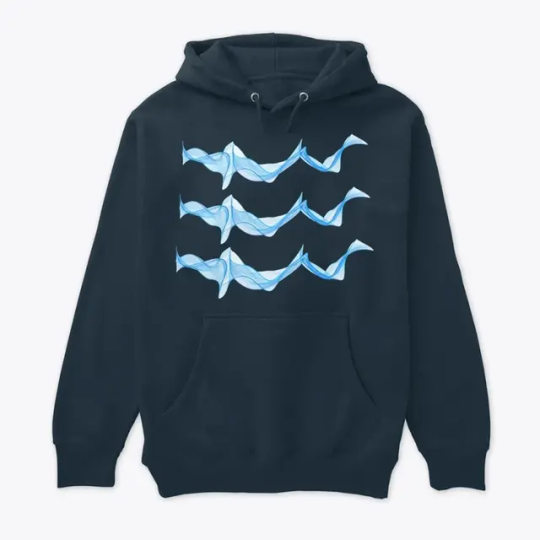
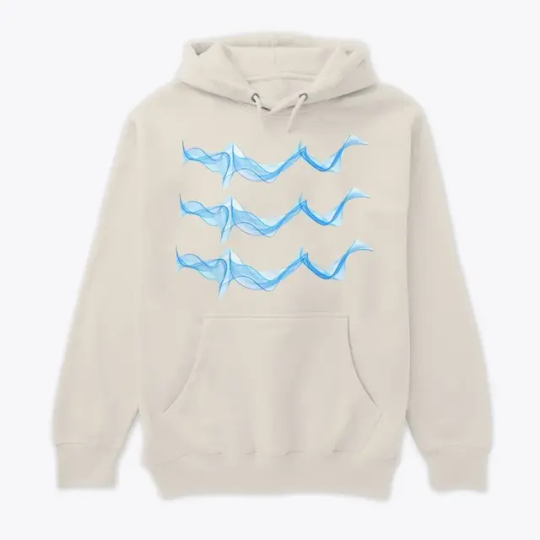


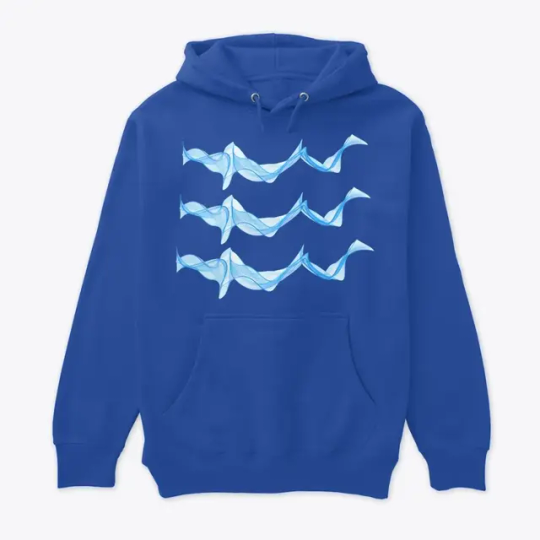
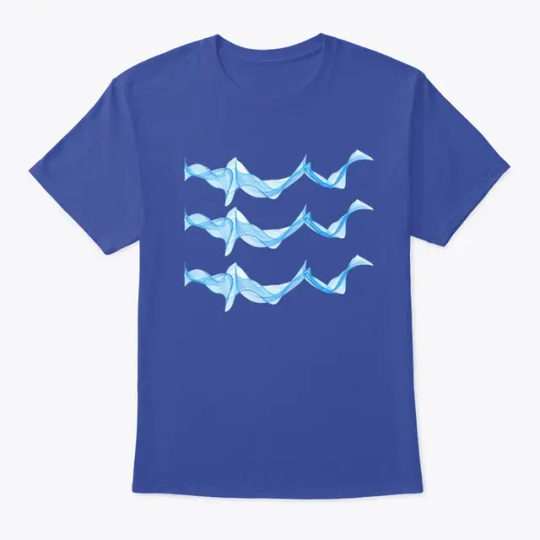
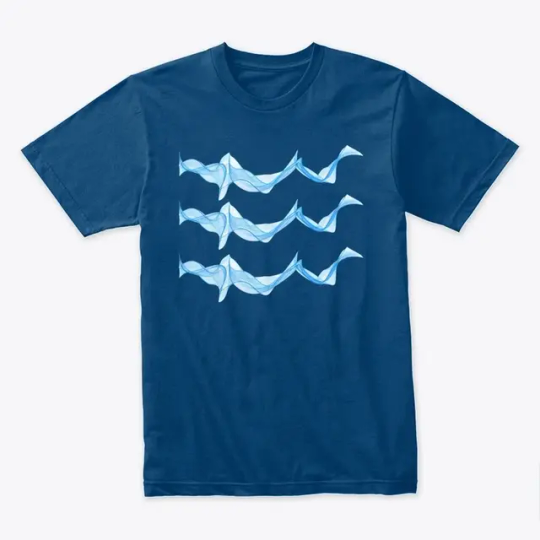
Buy Now
Sting Tails Transparent Blue on T-shirt Print
Sting tails are a fascinating and mysterious creature. They are found in all oceans of the world, and their venomous tails can deliver a painful and even deadly sting. The transparent blue of their tails is a mesmerizing sight, and it has inspired many artists and designers.
A sting tails t-shirt print is a unique and eye-catching way to show your love of these creatures. It is also a great way to start a conversation about sting tails and their importance to the marine ecosystem.
Here are a few ideas for sting tails t-shirt prints:
A realistic image of a sting tail, with its transparent blue tail and venomous spines.
A stylized or cartoonish image of a sting tail, with a playful or humorous tone.
A sting tail print that incorporates other marine elements, such as coral reefs, fish, or sea turtles.
A sting tail print that is paired with a message about ocean conservation or marine life education.
When choosing a sting tails t-shirt print, it is important to consider the quality of the design and the printing process. You want a print that will look good and last for a long time.
Here are a few tips for finding a high-quality sting tails t-shirt print:
Look for prints that are designed by professional artists or designers.
Choose prints that are printed on high-quality fabric.
Avoid prints that are screen-printed, as these prints can fade and crack over time.
Look for prints that are digitally printed, as these prints are more durable and fade-resistant.
Once you have found a sting tails t-shirt print that you love, you can wear it with pride. It is a great way to show your appreciation for these amazing creatures and to start a conversation about their importance.
Here are a few additional SEO tips for writing about sting tails t-shirt prints:
Use relevant keywords throughout your content, such as "sting tails", "t-shirt print", "transparent blue", and "marine life".
Write informative and engaging content that will help readers learn more about sting tails and why they are important.
Include images and videos of sting tails t-shirt prints to make your content more visually appealing.
Link to other reputable websites and resources that provide information about sting tails and marine life.
#Sting tails#Design T-shirt & hoodie#Men's & women's fashion#Men's & women's wear#Men's & women's design#Girls& boys fashion#Girls & boy's design#Girls & boys wear#Unisex fashion#Attractive design#Latest trends on social network#Best price#Buy now#Affordable price#Cheaper & Luxury T-shirt brand#Jargon_#Jargon brand officially online store
2 notes
·
View notes
Text
Expert Tips for Shopping Beauty and Skin Care Products Online
In the digital age, shopping for beauty and skin care products online has become a convenient and popular option. With the click of a button, you can explore a vast array of products, read reviews, and have your favorite items delivered to your doorstep. However, navigating the online beauty market can be overwhelming with the sheer volume of options and the potential for misinformation. To help you make informed decisions, we’ve compiled a comprehensive guide with expert tips for shopping beauty and skin care products online.
1. Know Your Skin Type
Before you start shopping, it’s crucial to understand your skin type. Whether you have dry, oily, combination, sensitive, or normal skin, knowing your skin type helps you select products that cater to your specific needs. For instance, if you have dry skin, look for hydrating and moisturizing products, while those with oily skin should opt for oil-free or mattifying formulas. Understanding your skin type ensures you choose products that enhance your skin’s health and appearance.

2. Research Ingredients
Ingredients are the cornerstone of any beauty and skin care product. Familiarize yourself with common ingredients and their benefits. For example, hyaluronic acid is known for its hydrating properties, while salicylic acid is effective for treating acne. Avoid ingredients that may cause allergic reactions or irritate your skin. Websites like the Environmental Working Group (EWG) offer databases where you can check the safety and efficacy of various ingredients. Being ingredient-savvy helps you make better choices for your skin’s well-being.
3. Read Reviews and Ratings
One of the significant advantages of online shopping is access to customer reviews and ratings. Reading reviews from other users gives you insight into the product’s effectiveness, texture, fragrance, and any potential side effects. Look for reviews from users with similar skin types or concerns as yours. While reviews can be helpful, remember that individual experiences may vary, so consider them as part of your decision-making process rather than the sole determinant.
4. Check for Authenticity
The online beauty market, unfortunately, includes counterfeit products that can be harmful to your skin. To ensure you’re buying authentic products, purchase from reputable websites or the brand’s official site. Look for authentication features like holograms or QR codes on the packaging. Additionally, check the seller’s return policy and customer service responsiveness as indicators of their credibility. Authentic products ensure you’re getting the quality and efficacy you’re paying for.
5. Understand Product Claims
Marketing claims on beauty products can be enticing but sometimes misleading. Terms like “all-natural,” “dermatologist-tested,” or “clinically proven” can be ambiguous. Learn to differentiate between marketing jargon and scientifically backed claims. Look for products with certifications from reputable organizations or clinical studies supporting their claims. Understanding product claims helps you set realistic expectations and avoid disappointment.
6. Consider Your Budget
Beauty and skin care products come in a wide price range. While it’s tempting to splurge on high-end brands, there are many affordable options that deliver excellent results. Set a budget before you start shopping and stick to it. Compare prices across different websites and look for discounts, bundles, or loyalty programs to get the best deals. Balancing quality and cost ensures you maintain an effective skin care routine without breaking the bank.
7. Know the Return Policy
Despite thorough research, sometimes products may not meet your expectations. Understanding the return policy of the online store is essential. Look for websites that offer hassle-free returns and exchanges. Knowing you can return a product if it doesn’t suit your skin provides peace of mind and encourages you to try new products without the fear of wasting money.
8. Sample Sizes and Trial Kits
Many online retailers offer sample sizes or trial kits of their products. These smaller versions are a great way to test a product’s suitability for your skin without committing to a full-size purchase. Trial kits often include a variety of products from the same line, allowing you to experience the brand’s overall effectiveness. Sampling before buying ensures you invest in products that truly work for your skin.
9. Subscribe to Newsletters
Subscribing to newsletters from your favorite beauty brands or online stores keeps you informed about new product launches, special offers, and exclusive discounts. Many websites offer first-time subscribers a discount on their initial purchase. Being on the mailing list ensures you stay updated on the latest trends and can take advantage of promotional deals, saving you money on your beauty and skin care products.
10. Join Online Communities
Online beauty forums and social media groups are valuable resources for recommendations and advice. Joining communities of beauty enthusiasts allows you to share experiences, ask questions, and get personalized advice. Platforms like Reddit, Instagram, and Facebook have vibrant beauty communities where you can learn from others’ experiences and discover new products. Engaging with these communities provides practical insights and helps you make informed decisions.
11. Watch Video Reviews
Video reviews and tutorials on platforms like YouTube and Instagram offer a visual and detailed perspective on beauty and skin care products. Beauty influencers often provide honest reviews, demonstrate product application, and share their personal experiences. Watching these videos gives you a better understanding of the product’s texture, color, and performance. However, consider multiple reviews to get a balanced view before making a purchase.
12. Consult with Professionals
If you’re unsure about which products to choose, consider consulting with dermatologists or professional aestheticians. Many dermatologists offer online consultations where they can recommend products based on your skin type and concerns. Professional advice ensures you’re using products that are safe and effective for your skin, minimizing the risk of adverse reactions.
13. Check for Expiry Dates
When shopping for beauty and skin care products online, ensure you check the expiry dates. Using expired products can cause skin irritation and reduce their effectiveness. Reputable online stores usually display the product’s expiry date in the description or on the packaging. Always verify the expiry date upon receiving your order to ensure the products are fresh and safe to use.
14. Stay Updated on Trends
The beauty industry is constantly evolving, with new products and trends emerging regularly. Staying updated on the latest trends helps you discover innovative products that can enhance your skin care routine. Follow beauty blogs, magazines, and social media influencers to stay informed about new releases and upcoming trends. Being aware of industry trends allows you to experiment with new products and keep your routine exciting.
15. Look for Clean Beauty Products
Clean beauty has become a significant movement in the industry, focusing on products made without harmful chemicals. Clean beauty products often avoid parabens, sulfates, phthalates, and synthetic fragrances. If you prefer clean beauty, look for certifications like “Cruelty-Free,” “Organic,” or “Eco-Certified” on product labels. Clean beauty products are designed to be gentle on your skin and environmentally friendly, offering a safer alternative for your beauty routine.
16. Utilize Filters and Search Options
Most online beauty stores offer filters and search options to help you find products tailored to your needs. Utilize these features to narrow down your search based on skin type, concerns, ingredients, and price range. Filtering options streamline the shopping process and help you quickly find products that match your preferences. Efficient use of these tools saves time and enhances your shopping experience.
17. Read the Fine Print
When shopping online, always read the fine print, including the product description, shipping information, and terms of service. Understanding the store’s policies on shipping, returns, and refunds ensures a smooth shopping experience. Pay attention to any disclaimers or special instructions related to the products you’re purchasing. Being well-informed about the store’s policies helps you avoid potential issues and ensures you have a positive experience.
Why Choose Style Studio for Your Beauty and Skin Care Needs?
At Style Studio, we believe that beauty and skin care are personal journeys that deserve the highest quality products and an exceptional shopping experience. Our extensive collection of beauty and skin care products is curated to cater to all skin types and concerns, ensuring you find the perfect solutions for your needs. We prioritize authenticity, offering only genuine products from trusted brands to ensure your safety and satisfaction.
Our user-friendly website makes it easy to browse and buy skin care products online, with detailed descriptions, ingredient lists, and customer reviews to guide your choices. Plus, our dedicated customer service team is always ready to assist you, ensuring a seamless and enjoyable shopping experience.
Ready to elevate your beauty and skin care routine? Visit Style Studio today to explore our curated collection of premium beauty and skin care products. With our easy-to-use website, secure payment options, and commitment to quality, shopping for beauty and skin care products online has never been easier. Don’t miss out on our exclusive offers and new arrivals—buy skin care products now and discover the best in beauty at Style Studio. Shop with us and let your natural beauty shine!
0 notes
Text
Symphogear, EP. 5 (Cont.)

Tsubasa ruminates about her current situation in her Symphogear Brand Safety Capsule of Absolute Dunces.

“aight ive done seen the light lemme at that sweet, sweet taco bell”
Meanwhile, some old ass politicians rumble about Relics.

“im old.”
But they immediately get fucked up in a nasty car accident.

As it turns out, the Americans were waiting to intercept these old crones to steal The Goods.

And holy fuck are they are American. Personally, I feel the writers of Symphogear watched Die Hard and immediately went “these people are fucking animals”. That’s just me, though.

“ooh ouch oh mmm ouchie ouch oooo ouch”
They tear into these people with an almost machine like efficiency.

These people don’t fuck around. There’s a strange surreality around it given that this is honestly pretty accurate to how brutal special operatives can be, but the Japanese accent they have in their English voices is... a bit jarring.

“IM BACK FROM THE MALL, YA’LL”

“oh god she’s back”

“ah, ryoko. as per your lingo, quote, ‘i like your new gucci boots... bitch’ was that good? im not fond at cursing at women unless its a mutual training session”
Genjuro alerts that the Minister of Defense for Japan has just been assassinated.

“shits bad”
Conveniently... Ryoko’s phone was broken. In her defense, it’s 2012. Battery life didn’t have the bragging rights it had now for phone.

“i personally use a razer flip phone. those will never go out of style!”
Ryoko manages to show them the box the Americans were trying to get. Suspiciously...

There’s a bloodstain on it.
So the main struggle right now is that the Bad Guys(tm) want to get their hands on Durandal, which is a completed relic that is hidden away miles underneath the school in the 2nd Division Labs.

This musty, old, shitty sword has immense power. Almost Godlike.

“hey why dont we just use the sword to beat up the bad guys”
The sword was handed from the EU to Japan for Japan to safekeep, and in exchange to forgive some of the loans the EU owed Japan should the EU economy collapse.
How topical.

“i read a lot of beserk and honestly im pretty sure someone beats up the bad guys with that dumb sword”

“listen nerd, we’re not doing that dumb weeb anime shit. we’re taking this sword to a vault to the bottom of parliament.”

“thats right. who needs anime when you’ve got nicholas cage.”
And so, they plotted to deliver this dumb sword tomorrow.

Ryoko logs into Runescape.
Fun fact: Fulcanelli is a reference to this dude, who was a French alchemist whose identity nobody really knows. Alchemy is a concept that will come up during GX that has no relevance whatsoever during these first 2 seasons except in some passerby jargon. This as just a cute thing I wanted to point out.

You know, that’s a pretty sexy sword upon closer examination.

“thats the dark souls of swords”

“ah! a fellow gamer! im glad that you too partake of the souls of darkening. would you like to play a two player match somtime, fellow Gamer?”

“I would genuinely rather eat shit for the rest of my life!”
The scene ends. Alright, where are n-

Oh God we’re back to this bullshit. Okay then.
Miku, reasonably, is upset that her wife is gone for several hours for increasingly sketchy reasons. Much like an estranged wife going to see her “tennis instructor” for “private tennis lessons” in the “safety of their house, which has a tennis court”, Miku is worried that Hibiki is a liar liar, pants on fire.

Nose the size of a wire.
Hibiki, feeling the fear of God, quickly bails this increasingly tense situation.

Miku is suffering, and so am I with this hamfisted writing.

“you didnt even try the cookies i made out of frustration for you. i designed them all after me with increasingly angrier faces”

“im too young for a divorce. fuck, those cookies smelled good”
Hibiki decides to not sweat it anymore, opening a magazine and WHOA WHAT THE FUCK

WHAT THE FUCK IS THIS I DONT REMEMBER THIS WHEN DID HIBIKI GET HER HANDS ON THIS OH MY GOD

“HELL NO IM MARRIED THE DEVIL CANNOT TEMPT ME”
Hibiki closes it up to reveal the relevant part of this magazine.

This is subtle, but it’s basically a vehicle to explain how things are covered up for Symphogears. Ogawa walks in, talking about how this headline was his doing.

“i wasn’t joking when i said we were literally the NSA”

Hibiki is happy that Tsubasa has been freed from Metaphor Limbo, having escaped the Water Metaphor Dimension back into real life.

“she literally wont stop talking about taco bell and honestly its killing me inside”

“shit ill get her some”
Ogawa does some schpiel about teamwork and asks Hibiki for an idea on what to do with Tsubasas image even though he’s supposed to be the manager and it’s just general prattle.

Everyone gets briefed about the delivery. Ryoko’s soccer mom van sticks out like a sore thumb. Nobody on the Lydian campus asks why there are 5 cars outside the building with men in suits and fucking Hibiki standing there with them why are these children so fucking incurious.

“this feels like the world’s most important weed delivery, but im going to deliver the SHIT out of that weed”

“hibiki please its not weed”

“ALRIGHT FAM LETS DELIVER THE SHIT OUT OF THIS WEED”

Big thick black cars surround Ryoko’s tiny vehicle as they all drive in unison to the drop point.

No fucking around here. The weed must be delivered.

The weed? Secured as shit.

“its not fucking weed it’s a goddamned french sword okay god”

“ROAD’S LOOKIN’ A-OKAY FOR OUR WEEEED DRIIIIIIVE”

PSYCHE, NO IT AINT. ROAD’S CRACKING UP HARD. COMES APART, CAR FUCKING EXPLODES!

“oh my god we seriously arent fucking around here those guys are fucking dead”

“bruh you never delivered weed before? that shit happens all the time”

“anyway grab on to something ‘cause we’re gonna initial d this shit”
youtube

“i thought we were delivering WEED not SUSHI”


“WEED... SUSHI... IT’S ALL FUCKING METAPHORS, HIBIKI. AND WE’RE GONNA DELIVER EM!”

“now ORDER UP, MOTHERFUCKER”

Every car is destroyed.

Ryoko flips the car like nobody’s business.

“ryoko! the kansai drift was too strong!”

“your delivery’s late, pal. that’s gonna have to come out of your tip.”

“jokes on you! you already paid the tip beforehand online!”

“oh, we’re going with pizza jokes now? is that what we’re doing? yeah, sure, whatever”

Unfortunately, Chris ordered her pizza with meat, extra crispy.

“FUCK, i cant see anything. now i don’t know if they have the weed- i mean, the sushi- er, the pizza- god i hate all these JOKES”

RYOKO SUMMONS A FUCKING SHIELD OUTTA NOWHERE WHILE HIBIKI’S KNOCKED OUT COLD

“yo hol’ up a moment did this pervert manage to summon a shield”

“are- are you able to fight the noise? are you fucking kidding me? this entire time when literal children were fighting these battles, you literally could have fought back effectively? are we but mere playthings to you? is this really the bullshit im seeing?”

“uhhhhhhhhhhhhhhh i can only make shields. piss shields, out of piss”

“that is absolute fucking bullshit”

“but i believe it.”

Hibiki has primed her fists and is about to show how much she’s improved combat wise, which is actually a lot.

Nevermind, she tripped again. Turns out, Symphogears fight in heels constantly, which is absolutely fucking horrifying. Hibiki realizes this, and then

FUCKING BREAKS THE HEELS LIKE NOBODY’S BUSINESS.

AND THEN SHE WRECKS SHOP WITHOUT BREAKING A GODDAMN SWEAT

“oh shit how the fuck did she improve this quickly”
The suitcase where the sword is stored opens up. That means it’s activating.

Immediate fear.

“alright bruce lee you mightve mastered a thousand kicks but you better change your gameplan because im about to realign that pretty little face of yours”

“thank god you kicked me. needed you to get closer so i could kick your ass, after all”
The fucking suitcase, I shit you not, pops open immediately with the sword flipping to the sky like a bad Gmod toy as it suddenly stays floating, perfectly still.

“ive officially lost track on what the hell is happening”

The sword just floats there, as a sword does.

“you know how many fried turkeys i can cut open with that bad boy? that shits mine now.”
Chris goes to get it.

“fuck you! im going to slice HONEYBAKED HAMS with that sword!”

Hibiki intercepts it and takes the sword.

Now Hibiki becomes a proud Stand owner, having acquired the power of The World and stopping time at will.

“oooooh holy shit”

Hibiki, now channeling the power of Durandal, feels the raw strength of a completed relic all through her body.

Real spicy stuff running through her veins.

The power unleashing itself into a raw stream of piss skyrocketing into the stratosphere.

“the pizza has been delivered... all according to plan...”

“...she was right. honeybaked ham was the superior meat to slice...”

Hibiki is channeling a power source so ancient, so powerful, that through using her as a conduit, the sword actually finishes itself into its full, completed form.

Holy shit, Hibiki.

Goddamn. That’s a really sexy sword, actually! Pretty nice...

...oh.
You’re not looking so hot, pal...

“why is it that every opponent of mine can literally asspull all this garbage and im stuck here looking like a bad kamen rider villian getting my ass kicked every time. its not fair.”

Ryoko looks extremely hyped for this event. Maybe a little too much so.

“MAN FUCK THIS NONSENSE IM PUTTING AN END TO THE SUPER SENTAI POWERUP”


“O-OH FUCK- uh, i didnt say that. totally swear. you uh, keep doing that. yeah. aha.”

“SLICED...”

“...HONEYBAKED...”



“oh god. oh god. im sorry. im sorry. im so sorry. oh fuck im so sorry. honeybaked ham is better. fuck turkeys. fuck drumlegs. fuck any sort of fried meat. honeybaked ham is better please im begging you dont vore me or slice me in half IM BEGGING YOU OH GOD”

“...HAAAAAAAAAAAAAAAAAAAAAAAAAAAAAAAAAAAAAAAAAAAAAAAAAAAAAAAAAAAAAAAAAAAAAAAAAAAAAAAAAAAAAAAAAAAAAAAAAAAAAAAAAAAAAAAAAAAAAAAAAAAAAAAAM!”

“ham..... mmmmm... honeybaked ham....”


“WHO YELLED ABOUT HAM? god, im hungry now.”

Hibiki wakes up from it all after passing out, expressing a power of magnitudes unheard of, as if it were all a bad dream.

“YEAH THATS RIGHT WE HAD TO DELIVER THE WEED PIZZA AND I WANTED HAM AND- THE SWORD, YEAH! THE SWORD!”

To her disappointment, amongst this wanton destruction, no ham was found. Ryoko clues her in that Hibiki just single handedly completed a relic, and though the entire place is a mess, the mission wasn’t a complete failure. They’ll just have to return the relic back to base, now the entire location is, conveniently, destroyed.

“yeah yeah. the weed made it. the sushi made it. the pizza made it. what didnt we deliver today?”

“...”
“singing really does make you hungry, huh?”

12 notes
·
View notes
Photo

1. Create a user-friendly website
Google directs searches to your website so the user finds what they are looking for. When a user has a good experience with your law firm website, they are bound to visit again. So the criteria to make your website friendly for your audience are the same that will satisfy Google.
a) Website structure
Make it easy for the user to navigate your website. Every page on the website should add value if it doesn’t – remove it. Structure main tabs and sub-tabs in the order of process/information, whichever is relevant. If your website is content-heavy, it is even more important for the navigation to be simpler to enhance user experience.
b) Remove zombie pages
Remove the pages that are no longer required or relevant. For example, archives, old press releases, pages that contain less than 50 words and image media links. You can identify such pages using your Google Webmasters account.
c) Create your content easy to skim
When a non-legal professional is visiting your website, they will first skim through the content to see how much they can relate to it. Make reading easy for them. Use short sentences, short paragraphs, bullet points to highlight pointers and sub-headings. Avoid jargon and complicated legal explanation.
d) Use images and bold important terms
Images and graphics content makes the content visually appealing to the audience. Use relevant images and graphics that relate to the content. It is also easy to digest and the user can store important information that is in the form of images on their phone.
Use bold text for important terms.
2. Make your website mobile -friendly and quick to load
Mobile users have surpassed desktop users in 2018. Tablet users have also been successively increasing. This makes it important to make your website suitable for all screen sizes.
Website loading time is the first user experience with your website. With a shorter attention span, people do not wait for more than 2-3 seconds for a page to load. Stats prove that websites that load faster have 16.5% increased conversion rate.
3. Establish core practice areas
Establish a separate detailed page for each core law practice.
Include the attorneys’ picture and details that specialize in the practice. These are the most important pages on your website. You can,
Short and easy-to-read sentences
Use sub-headings to break texts
Use bullets for a skim read
Include relevant images on each page
4. Create different types of content
Create content that will help at each stage of a typical customer journey.
a) Awareness
At first, a user will want to find answers to his questions. You can create content in the form of blog posts, articles, videos and other resources.
For example, how can I get my driving charges dropped?
b) Evaluation
In the second stage, customers evaluate the options. They search for reviews and successful cases handled by Law firms that are posted online. Your testimonial page will display your professionalism. You can also include reviews received on other forums.
c) Find a lawyer
The final stage is where clients are actively looking for a lawyer using search terms like,
Criminal defence law firm
Criminal defence lawyer
Criminal defence
Hire DUI lawyer
When you optimize your core practice areas for the right keywords, your website will show up on Google at this stage.
d) Use different formats to present content
For the three stages above, use different content formats such as blog posts, articles, images, videos, infographics, case studies, testimonials, FAQs, etc.
HANDPICKED RELATED CONTENT:
[SEO content] – 9 Techniques to quickly rank your law firm in google
[SEO] Is it worth guest blogging for law firm?
5. Create videos to reach YouTube audience
YouTube is the world’s second largest search engine with over 1.9 billion monthly active users. Creating new videos regularly for YouTube will help you rank for YouTube searches and gain visibility on Google. You can use YouTube’s ‘Search Suggest tool’ to find the most searched keywords and then include those keywords in your video titles, descriptions to rank for them. You can also create videos for,
Client testimonials
Legal FAQs
How-to tips
Explain legal practice areas
6. Make your blog the go-to source for your practic area
You can build high-quality in-depth content for your core practice areas. This is a sure shot way to reach your target audience. You can write,
Blog posts on key topics/current issues relevant to your offerings
Step-by-step guides
Articles explaining legal terminology and complex topics in simple terms
FAQ
7. Secure your website with SSL (Secure Socket Layer)
An SSL certificate is the standard security for a website in the internet space.
4 reasons to add SSL to your website:
HTTPS is a signal in Google’s algorithm ranking
Around 40% of Google page one organic listing are HTTPS
84% of users abandon a purchase when they do not see SSL on the payments page of the website
SSL certificates act as a tiebreaker between two competing websites in Google’s search results
8.
Create your ‘Google My Business’ account
All the law firms target local clients regardless of their core practice areas and size of the firm. Using Google My Business is the first step to this. Your law firm is displayed in the local search results for the information shown in the below example.
To optimize your Google My Business account,
Enter your exact business location so the users can find you easily on Google maps
List your official business website in the most appropriate/specific category to show up in search results.
Add all the information that users will need to contact you – working hours, working days, address and phone number(s). Make sure this information is exactly the same across your other business listings online. Update it whenever there are any changes.
Add photographs of your staff and business premises. Get customer reviews on Google.
9. Link to credible sources
Quality and quantity of websites linked to your website will measure your law firm’s authority for SEO. The website with the highest number of digital votes is ranked the highest in Google’s search results. Here’s how you can build these votes,
a) Legal directories
There are plenty of directories online. You can choose the top ones that will add value to your law firm.
b) Location links
You can get backlinks from other local websites and blogs. You can guest blog for other Legal blogs and get a link back to your website. Better Business Bureau is an important directory where you can get an extra vote of confidence online for your Law firm.
c) Scholarship backlinks
Educational institutions have high-authority in the online market. You can approach universities and colleges to mention about your law firm and get a link back to your website. Google has a high ‘trustrank’ for them, which will benefit you.
d) ‘No follow’ links from social media
Social media not only builds your presence on its channels but also your social media accounts generate a ‘no follow’ hyperlink for your brand/website.
10. Measure and iterate your SEO KPIs
Measure and analyze your SEO KPIs frequently to check the results of the strategies implemented. The 4 KPIs to measure are,
Rankings – check to rank for main keywords on Google
Traffic – a number of visitors generated by organic search
Pages – traffic received on landing pages that were targeted
Leads – visits converted to leads
You can measure using tools like Google Analytics and Google Tag Manager.
for more details click here...
0 notes
Text
Lolli: A Way to Earn Free Bitcoins While Enjoying a Shopping Spree
Lolli.com is a digital rewards platform launched on August 22, 2018, that pays its users in Bitcoins as rewards, when they shop online. Till now, the company has partnered with over 750 brands to maximize their revenue margins. Each time a Lolli user shops with any of the partners, both get a small percentage of the sale. That is to say every time the users use Lolli platform, it receives a fixed percentage of the products’ MRP. But instead of keeping the entire percentage of the MRP for itself, Lolli shares a certain percentage with its users in the form of Bitcoins, which they can later use when they shop again from any of the registered partners of Lolli. As such, Chrome and Firefox users get a flat 7% back with free Bitcoins.
Lolli expanded its reign over 900 retail locations. It has partnered with Safeway (a subsidiary of Albertsons companies which is one of the largest dealers of food and drug in the US). Lolli’s partnership with Safeway.com enabled its users to order essential things like groceries and medicines online, on Lolli and earn Bitcoins on every purchase that they make. Before this, Alibaba the renowned Chinese E-commerce platform has also announced its collaboration with Lolli.
Features
Some of the exclusive features of Lolli are discussed hereunder, which makes it stand apart from other similar platforms.
Accessibility
Lolli is quite easy to use than many other Cryptocurrency based shopping portals. The website is user-friendly and does not use any sort of technical jargon.
24 x 7 Customer Support
Lolli provides excellent customer support to its users. Users can email their issues at [email protected] and get immediate responses from the team.
Growing customer base
With its tremendous popularity, Lolli’s customer base has increased rapidly. Users can connect to the Lolli community through social sites like Facebook or Twitter and can even directly apply by filling in the relevant forms.
How does it work?
In order to earn free Bitcoins from Lolli, all you need to do is, visit the official website of Lolli and download the browser extension. Then the users will be directed to any of the 750+ business affiliates of Lolli. Once the users reach the online store, they are notified by Lolli to activate their savings. Once Lolli is activated on the users’ device, they are free to shop their hearts out. As long as the orders are eligible, Lolli tracks the purchases made by the users, and send Bitcoins to the users’ wallet as soon as they receive them from the participating merchants.
However, users using extensions other than the Lolli extension, or using any other cashback or savings applications or coupon sites, are not eligible for earning Bitcoin rewards. This eligibility is at the sole discretion of the company’s affiliated partners and therefore the users can not challenge their decisions of exclusions. Moreover, some merchants do not provide Bitcoins to their users, if they use any other internal coupon codes in conjunction with the extension module of Lolli.
Though Lolli appears to be a very secure shopping app, the fact that it uses cold wallets to save its clients’ money makes it a little vulnerable to hacking incidents. Therefore, it is entirely upon the users whether they want to shop online on Lolli or not. If they are okay with the risks associated with Lolli, then it is a very intriguing experience to earn in Bitcoins while you shop.
The post Lolli: A Way to Earn Free Bitcoins While Enjoying a Shopping Spree appeared first on NameCoinNews.
https://cryptoveins.com/lolli-a-way-to-earn-free-bitcoins-while-enjoying-a-shopping-spree-2/
0 notes
Text
Online Advertising
Have you ever been window shopping? Just looking in the windows of stores...browsing? Did anything from the store ever just...follow you around? You’re browsing for a new hat and see one you like, but pass it by. Then in the video game store next door the hat is just...sitting on the shelf? And in the clothing store after that. Looking at you. Following you. Last episode we talked about advertising, and the long history of techniques for getting us to buy things. In today’s episode, we’re looking at what happens when those techniques move online, where you might be followed much more than you think. In the olden days, before online shopping, stores didn’t know what you were looking at. They couldn’t track your shopping habits and then place advertisements for stuff you like wherever your went. Hats were just hats; they couldn’t follow you around. Traditional advertisements were contextual, they were put in specific places – or contexts – where advertisers expected people to be. Commercials during must-see TV, billboards along traffic-filled highways, pages in popular magazines. Places with lots of eyes and people with nothing else to do. Advertisers had to jam all of the persuasive techniques and logical fallacies they could into expensive ads, and then HOPE the right people would see. But that was before the internet. And smartphones. And social media. And geolocation and cookies and pop-up ads and ad blockers and… Yeah. It’s about to get scary. [Theme Music] Old-timey advertisers didn’t know who would see their ads, and they also didn’t really know how well they were doing. Put up an ad for soda right by a high school, and maybe they’d have a rough idea of who walked by it everyday. But they wouldn’t know how many kids actually bought soda. It wasn’t a total guessing game, but it wasn’t a science, either. Because of this, advertisers targeted different groups of people, or demographics: teenagers, older men and women, business professionals, families, white people, black people, Asian people. Still, these groups are pretty broad. You could place an ad with a TV show that drew mostly female viewers or a radio program that had mostly teen listeners, but you couldn’t get too specific. So, ads had to be broad, too, and the products being sold were incentivized to be one-size fits all. Anything too niche for a wide audience couldn’t afford to spend money on big, broad advertising. Since the birth of mass media, advertisers have been looking for better ways to do this, to make sure their ads hit just the right people. Enter: the internet. In the early days of the internet, the ad world, was still just like print or TV advertising. Ads were created to reach as broad an audience as possible. First came display ads – and like print ads, they’d just sit there on your screen. And quickly advertisers tried to gussy these up: pop-ups (the worst) and animated ads. Everything to get attention. But the real innovation was turning ads into links. What happens when an Ad is a Link? It’s convenient. See an ad for a hat. Click. Bam – you’re at hatstore.com. But that also means hatstore.com can COUNT how many times that link was clicked. Advertisers no longer had to estimate how many eyes saw their ads or what they did in response. And for a while, the click-through was an unstoppable measurement tool. This brings us to: the web cookie, which made these ads even stronger. Cookies are like little breadcrumbs that websites and apps place on your device. They follow you around the web and report back on your habits. Suddenly advertisers could track who was clicking on those ads and where they’d go next. Did they browse the site? Did they download a coupon? Did they – [gasp] – buy something?? They could figure out who those viewers were, their shopping habits, and even what their life was like. Pre-cookie, advertisers put their targets – that’s you – in pretty broad demographic buckets, but now they could narrow that immensely. Ads can target just 18-24 year old women with an interest in science who live in Brazil or 34-45 year old men who like soccer in Canada. This is called addressable advertising, sometimes referred to as behavioral targeting. Take a look around this video. Are you seeing any ads? If so, are they things you’re interested in? That might be because YouTube is using cookies to display what it thinks you want to see. Your recommended videos work that way, too. Every time you use your phone or computer, you’re leaving data breadcrumb trails. The websites you visit log your IP address a unique set of numbers used to identify your computer as you browse the web. There are other kinds of unique identifiers, too. They can track what kind of device you’re using, where you are, how fast your internet is, who else you follow. All kinds of stuff. You may be thinking, “Isn’t getting better music recommendations and seeing actually relevant ads worth a few cookie crumbs?” The problem is, the websites and apps you do trust to use your data trails don’t keep it to themselves. Let’s take a deeper look at this in the Thought Bubble. When you open up a new app or website, or login to a social network, you’ll often come across some Terms and Conditions. Sometimes they’re called Terms of Service. These are the rules of the road. The company is telling you what you can and can’t do in the app – like use it to commit a crime, or share stolen work. But they’re also telling you what they will and won’t do. Most of the time when we create a new account like this, we just check the box to accept the terms and conditions and move on. But companies know we don’t read those ridiculous documents. Research even shows it would take us 25 days each year to read all the things we agree to. So, more often than not, we’re actually consenting to a lot of stuff we probably wouldn’t if we actually read the darn thing. For example: Instagram. You think you’re using an app to share photos with friends and chat with them. The app’s Terms of Use say: You can’t post sexually explicit, violent, hateful, or discriminatory things on Instagram. You can’t steal someone else’s login, or use your account for illegal purposes. They have a right to kick you out if you break the rules, like spamming or threatening others or stealing someone else’s photos. Ok, that makes sense. But their Terms of Use also say If they do want to kick you out, they can do so without warning. And afterwards all of your photos and data and comments will no longer be accessible through your account. Despite their Community guidelines, they say they have no official obligation to take down any Instagram content. They don’t own your content, but you DO grant them a “non-exclusive, fully paid and royalty-free, transferable, sub-licensable, worldwide license” to use your content. In other words, they could use your photos however they want, including selling them to third parties. Doing so would be a big breach of trust, so they probably wouldn’t. But they could. They use analytics tools that collect information sent by your device, including the web pages you visit. And they may use “device identifiers” on your phone to track your browsing habits to serve you personalized content or ads. With Instagram or any app you use, with the right clause hidden in all that legal jargon, your info can be sold to third parties, over and over again. Then, advertisers can sell you more, better targeted ads. So when you absent mindedly check the box to accept god-knows-what terms and conditions, you’re often also signing away your right to privacy. Right now, that info mainly goes to advertisers, but you can see how our ambivalent attitude around privacy could make us vulnerable to bad actors. Or, say foreign influence on things like...you know...presidential elections. Thanks, Thought Bubble. Data tracking isn’t just used to serve you personalized ads, either. It can actually determine what kind of content you see elsewhere. When we browse Amazon or Netflix, they provide us with suggestions based on stuff we’ve already seen. These recommendation engines, in a way, are advertisements. It’s showing you one show or product over another and, by extension, hiding others. The companies that use them certainly say they’re just being helpful. But these can actually limit our options, and keep us boxed into the things big corporations want us to see. There are many different kinds of these low-key ads. But two really common ones are easy to overlook. The first is sponsored content. Sponsored content can mean anything from an Instagram post to a documentary, that an advertiser paid to make and publish. It may not be obviously selling anything – like an article about taking care of your car, but paid for by a car company with its logo at the top. Or it’s that weird list of outlandish, tabloid-y articles at the bottom of a more reputable site – like “you’ll never believe how they died” with a picture of a celebrity who is definitely alive. These are particularly hard to pick out, because publishers like your favorite magazines and websites, will place them alongside their own original stuff, the editorial content, so they blend in. First: Learn to distinguish between ads and non-commercial information. Look for phrases like “sponsored content” “native content” “advertorial” or “presented by brand name here.” Celebrities and media creators may say they’re “partnering” with a brand – that means they’ve getting money to promote that brand. Even when you Google, scope out the tiny green “ad” in a listing that shows they paid to be at the top of the list. Second: if nothing else, remember this: when something is free, you’re the product. If you’re sitting through ads to watch a video, or scrolling past them on Instagram, that’s the price you pay to share photos and make vlogs shipping Kate Winslet and Leonardo DiCaprio IRL. Check through all your online profiles and see how much info you’re giving away. Head to the settings on your phone and turn off geolocation features and microphone access wherever you can. And next time you create an account, think twice about handing over any personal info. Create a dummy email address for that stuff if you have to. Finally, know that nothing ever goes away online. Sure, the internet may forget about your embarrassing photos and Snaps may “disappear,” but when you’re online, you’re being tracked. It sounds scary because it is. The best way to navigate this hyper-targeted media environment would be to, well, log off. Forever. But we know you’re not going to do that, that’s why you’re here with us today. The next best thing is to be hyper vigilant about what information you share online and minimize it whenever you can. Be wary of anything that seems free, because chances are you’re paying for it with your attention and your life story. Right now, the biggest internet and tech companies make the rules, and we all follow along because we don’t like to read long legal documents. But, with any new technology, there are organizations and policies that try to reign in the power of big players like Facebook and Google. Sometimes they’re successful, and sometimes...not so much. We’re going to learn all about that next time on Crash Course Media Literacy. Until then, I’m Jay Smooth. See ya! Crash Course Media Literacy is filmed in the Dr. Cheryl C. Kinney Studio in Missoula, MT. It’s made with the help of all of these nice people, and our animation team is Thought Cafe. Crash Course is a Complexly production. If you wanna keep imagining the world complexly with us check out some of our other channels, like Sexplanations, How To Adult, and Healthcare Triage. If you'd like to keep Crash Course free for everyone, forever, you can support the series at Patreon, a crowdfunding platform that allows you to support the content you love. Thank you to all of our patrons for making Crash Course possible with their continued support.
https://youtu.be/cmRcoJZRXEY
0 notes
Text
Seeking an edge, more managers beef up websites to woo clients
New Post has been published on https://britishdigitalmarketingnews.com/seeking-an-edge-more-managers-beef-up-websites-to-woo-clients/
Seeking an edge, more managers beef up websites to woo clients
Getty Images Institutional money managers’ websites — long saddled by jargon and vague investment descriptions — are playing a more important role as a portal for showcasing managers’ capabilities in an increasingly competitive industry, sources said.Managers are using their websites not just to introduce themselves and put out their contact information, said Andrew McCollum, managing director, investment management, at financial consultant Greenwich Associates, Stamford, Conn. The sites also have become a major part of the firms’ overall institutional marketing strategy as pension fund executives do more of their own research apart from their consultants, he added.“There’s an evolution in how institutions consume information,” he said. “Younger officials will use websites, LinkedIn, social media. Older executives will rely on their consultant or their staff, but their staff is being influenced by more digitally accessed information like thought leadership.”Related CoverageMoney managers get caught up in #MeToo movement Thriving equity markets, diversification cited by most for double-digit growth Money managers to compete for $1.5 trillion in corporate cash coming to AmericaMr. McCollum said manager websites historically have been “more of a reactive tool, a static property with basic messages. What’s changed now is that the website is no longer a static tool. Managers that get this are driving visits to their website through things like thought leadership and, by doing that, obtaining information on prospective clients.”Mr. McCollum noted it is important to look at the development of websites in the context of the maturing of the money management industry.“As the industry hits an inflection point from a growth industry to a mature industry, it’s become more competitive,” he said. “That requires institutional managers to create a marketing strategy. A website is one tool for getting their message out.”The websites of Putnam Investments LLC, BlackRock (BLK) Inc. (BLK) and Pacific Investment Management Co. are examples of good institutional client websites, he said.But smaller managers looking to build their institutional business also are looking at their websites to drive more interest in their firm and their strategies, said Tammira Philippe, president and CEO of $10.4 billion long-only quantitative equity manager Bridgeway Capital Management Inc., Houston.“We’re thinking of the website as building trust, not to erode trust,” Ms. Philippe said. “As we’re looking to serve more institutional clients, we spend a lot of time in trying to make our website help us do that. But we’re honest enough to say we have a long way to go.”Ms. Philippe said her firm has tapped its current marketing and operations teams for input on improving its website.“We will seek stronger technical infrastructure and data management capabilities that will allow us to efficiently produce and deliver high quality content,” she said. To that end, the firm this year completed a study by money management technology consultant and provider Cutter Associates to assess Bridgeway’s digital marketing infrastructure, including its website.Added Fergal McGovern, CEO of VisibleThread Inc., a Dublin-based software provider and website analysis service: “Asset owners are accessing manager websites first as a means of going directly to the source. That’s happening more and more in financial services. And if those websites are too complex or hard to read, they’ll just go somewhere else.”VisibleThread in a report on financial services websites earlier this summer said most money managers’ websites ranked poorly in terms of content.“As a group, financial services content is poorly written. Even the top-ranked websites don’t meet expected standards,” the report said. “Content clarity is poor industrywide.” However, the report said Putnam had the highest ranking in terms of readability of all managers’ websites studied.Mark McKenna, head of global marketing at Boston-based Putnam, said the company’s website for institutional investors serves as a clear introduction to Putnam’s capabilities, performance and thought leadership, ultimately “opening doors” to direct meetings with sales and client service employees “because people are finding this interesting.”To build its website, Putnam in 2017 hired a full-time writer with a journalism background to produce global markets stories for its institutional clients, backed by a content strategy director, an editorial review manager and an account manager who provides business strategy input “and is dedicated exclusively to the institutional business,” Mr. McKenna said.“By the time (institutional investors) come to Putnam, they’re highly informed,” Mr. McKenna said. “This already happens in retail (sales). People go to the stores after visiting their websites. They know what they want to buy and what it costs. What we do is remove the doubt from the prospective client. They review our website content, subscribe to our custom content and view our videos. … Back in the day, some of this could have been a PowerPoint presentation to clients, but now it’s web first.”Traffic to its institutional-targeting content has jumped in the past year, Mr. McKenna said. For example, web views on Putnam’s global macro report have increased 28% since August 2017.He said while content on the site is promoted mostly through the institutional homepage itself, “paid and organic search both play a key role in bringing users to the institutional site. For example, year-to-date July 31, organic search drove 50% of visits and paid search drove 21% — meaning search helped contribute 71% of traffic to the site.”Greenwich’s Mr. McCollum, who also serves on the board of the firm’s $100 million 401(k) plan, said looking at manager websites in advance helped in a recent search for an international equity manager to run one of the plan’s options.“We went to managers’ websites to read their thought leadership,” Mr. McCollum said. “It helped us whittle down prospective managers. It’s an example of how important websites can be to provide introductory information.”Past issues surrounding manager website content included jargon rather than direct, understandable wording that was used to convey details on investments and operations, said Jim Ware, founder, Focus Consulting Group LLC, a Long Grove, Ill.-based money manager consulting firm.“When we start working with a firm, we ask for a pitchbook with an organizational chart and ask for a description of their strategy,” Mr. Ware said. “They say, ‘they have a disciplined process,’ or ‘we use a filtered process.’ That doesn’t tell me anything. But that’s what they also say on their websites. It’s usually something like that and who’s the CEO, their picture and background. There’s no mission statement on the website.”Mr. Ware said managers often hire branding firms to design and populate their websites that don’t really know anything specific to financial services. “The branding message — ‘a disciplined shot, a strict investment process’ — really? You spend $200,000 to bring a firm in to write generic, vanilla stuff like this?” he asked.Focus doesn’t make recommendations to manages on branding, Mr. Ware said, “but if we did, we could advise (managers) on how they can say they’re different from others, tell them they really ought to tout that.”VisibleThread’s Mr. McGovern added that managers have been more comfortable with resorting to jargon and vague descriptions of investment strategies, but now, “if a website isn’t meaningful, it won’t serve a purpose as a window to your firm.”A common concern among money managers, Mr. McGovern said, is getting website content approved by their compliance departments. But that’s changing as managers take a closer look at the content.“Those managers ahead of the game understand the difference” between using what some might consider safe, vague terminology and providing basic but essential information about their firm and its investments, Mr. McGovern said. “They understand they need to look at their sites from an outside-in perspective. The progressive side of web design is looking at answering a viewer’s basic questions. The poor compliance officer is nailed with being the culprit to keep websites from doing that.”Still, Mr. McGovern said, most managers haven’t gotten “ahead of the game.” Has VisibleThread seen any improvements overall in the industry on money management content clarity since the first study in 2016? “Not materially,” he said. “The industry isn’t any better with this than they were two years ago.”Focus’ Mr. Ware agreed, adding most managers he works with aren’t concerned. In an informal survey of seven money management clients on whether their websites deliver new business to the firms, six said no and one said yes but as a part of a broader marketing strategy.“But it’s a timely discussion,” Bridgeway’s Ms. Philippe said. “We’re discussing it, and I know other money managers are discussing websites as well.” Google News – Editors Picks, Defined contribution plans, Money management, 401(k), BlackRock, Pacific Investment Management Co.,Source: http://www.pionline.com/article/20180913/ONLINE/180919935/seeking-an-edge-more-managers-beef-up-websites-to-woo-clients
0 notes
Text
Auto Profit Funnels Review and bonus
Auto Profit Funnels is a cloud-based app that creates an entirely 'provided for you' sales channel, full with personalized product & press web page with just a couple of clicks of your computer mouse.
Official site: https://www.socialleadfreak.com/auto-profit-funnels-review/
INSTANCE 1-- CRAZYEGG
Crazy Egg's sales channel is massive. They have an outstanding blog with high-quality web content. Their sales channel actually begins at their blog site. That means a lot of their traffic is originating from incoming resources like Google.
They have a clear phone call to activity (CTA) below their article to drive consumers onto their email checklist.
There's additionally a direct CTA for Crazy Egg's product that slides into view as you scroll down concerning seventy percent into the post.

Action In Sales Channel
1. Traffic (from references, organic, blog site, and also ads).
Crazy Egg has a pop-up at the end of their post for a cost-free 30-day test.
If you register for the e-mail list, you will be reminded Crazy Egg's homepage.
They additionally connect directly to Crazy Egg at the top of every page.
2. Homepage (email and password required for following step).
3. Pricing.
4. Checkout kind.
The prices page has a similar visual to the rest of the website. It's extremely straightforward and also has actually resembled this for over a year currently. Crazy Egg provides totally free tests. The rates web page has light copy, with focus on social evidence. The language is basic, no jargon.
After you choose your rates plan, the last step is to include billing details. Crazy Egg guarantees you on the check out web page that you will not be charged within the initial 1 Month.
Why It Functions.
Inning Accordance With Neil Patel, which I spoke with a number of years back, Crazy Egg has actually consistently increased its conversions as well as profits year over year.
The focus of the funnel's design gets on simplicity. There's not a great deal of copy. Rather, there's a concentrate on solid visuals.
Those visuals are among the important things that truly attracts attention for me about Crazy Egg now as compared to exactly how it was. In the past, it was a lot more heavy on the copy and in clarifying the Auto Profit Funnels Review advantages of the solution.
What Makes It Distinct.
Rather than pestering the customer with information, Crazy Egg maintains the info light. Nevertheless, the duplicate is clear and also certain so consumers know exactly what they're getting prior to they send their e-mail address.
Where it Could Be Much better.
When I first composed this post in 2011, I pointed out just how the marketing duplicate for Crazy Egg's heat-mapping feature can have been stronger by better discussing just how the tool assists customers to boost conversions. While this info is more clear currently thanks to the thorough visuals and basic copy design that allows the visitor to skim as well as check-- it could be better by explaining a little bit extra.
Action 2: Certify Your Potential customers.
Just because an individual matches your perfect customer group doesn't indicate that they are necessarily an excellent customer. Maybe Bob as well as Jane are intending a marital relationship however don't care regarding flower plans. They absolutely wouldn't be in your prospect array if that is the case.
Therefore, you'll require a way to qualify your potential customers after you've identified them, as well as after you have actually driven them into your sales funnel.
Certifying leads is simple. You could take surveys or perform polls, you can begin discussions and get individuals to chatting to make sure that they expose their demands and wishes, or you can create a product that appeals to your perfect consumer after that promote it to the best audience. Those that certify will certainly attack while those who do not, won't.
Step 3: Use Sales Funnel Principles.
Your sales channel consists of the methods you make use of to drive prospects and also potential customers to your organisation as well as close the sale. Online, you might have a blog site that you write to everyday. You advertise your blog on social media to accentuate your business. After you obtain potential customers to your blog, you attract them with an offer so as to get their e-mail addresses. You then send out routine e-mail messages to obtain those prospects thinking about an item you desire them to buy.
RELATED: Find Out Just How New Consumers Discover Your Organisation.
Some Auto Profit Funnels Review marketers presume regarding section their potential customers. They can after that market certain items to those sectors.
One more method to do this is to market something that is conveniently cost effective, claim a $10 or $20 product. After that you have a listing of validated customers. You then use a higher-priced product and services and send a notice to your verified purchasers to see who nibbles on that particular offer. You are driving your leads deeper into your channel.
How to Construct a Successful Sales Funnel.
Your sales channel-- likewise referred to as your earnings channel or sales process-- leads potential consumers through their buying trip.
A well designed and appropriately implemented sales funnel has four stages: recognition, rate of interest, choice, and action. As well as it helps a service to convert their leads into paying clients.
It is essential-- and difficult-- to build a wonderful funnel. One that aids you identify the ideal purchaser early, as well as makes getting your item a delighted experience.
If you will create your very first sales funnel, this post will certainly aid you recognize the different steps of constructing a sales channel.
INSTANCE 2-- GROUPON
Groupon might not be a hot, brand-new principle any longer, but, they're still a major firm reaching millions of customers monthly.
They have a really clear email opt-in pop-up on their website. It resembles just what they used to have on their homepage and now it's revealing to all visitors throughout the site on their very first see.
It concentrates your interest as well as has actually clearly been a successful approach for expanding their audience because they have continued to use it over the years. Let's take a look at the rest of their sales funnel to see just how it works.
Action In Sales Channel.
Traffic (from ads, direct, references, associates, email list, and also extra).
Homepage.
The pop-up on the homepage incentivizes you to offer your e-mail address. You get a discount coupon code for $10 off $25 on your initial order simply for signing up.
From there, you could search as well as purchase solutions.
Inner homepage sight offer details.
For example, Groupon in Chicago.
Acquisition type.
Why it Works.
When you find a bargain you like on Groupon, there's a clear CTA to get you to click. You do have to register via e-mail, though. Groupon's follow-up deals are then tailored to its clients to obtain them to make use of the service once again.
Groupon sends a day-to-day e-mail blast to its countless customers throughout thousands of locations where it has bargains. Groupon's deals are somewhat a lot more tailored towards females because they make up a majority of its client base.
What Makes it Distinct.
As an email-driven service, Auto Profit Funnels adheres to its weapons. You can't even preview deals and solutions up until you subscribe. There are no complimentary trials. Clients either desire in or they do not.
Groupon's company model and also sales funnel is, in such a way, best idea of as a large e-mail listing which takes place to have actually an internet site connected to it.
Where it Could Be Better.
After signing up for Groupon, you're sort of left in the dark concerning just what to do following. You aren't sure if you're searching in the ideal location. You're not sure where to look by location (it's in the top right hand corner, by the way). The customer experience is a bit complicated as well as could turn customers away.
Tip 4: Establish Your Sales Funnel.
The best method to set your sales channel is to prepare it in reverse. If you have a $100 product, for example, you need to find the people willing to fork over that type of money for the advantages you're using. However very few individuals are going to part with that sort of cash unless they recognize they could trust you. So you have to slowly accumulate some depend on.
That implies you need to offer a lower-priced item. You'll should develop that item, yet exactly what needs to happen prior to you do that?
Walk on your own through the sales procedure in reverse. At each action in the process, ask yourself, "Just what is my prospect likely to do prior to they trust me adequate to take this action?" After that ask on your own, "What do I need to do to drive my prospect to that decision?".
A common backwards plan for a sales process appears like this:.
Front runner product.
Mid-range item.
Intro product.
Free informative piece (teaser).
Email opt-in campaign.
Blog discussion.
Social media interaction.
Offline, it might look more such as this:.
Costs product acquisition.
Discount rate deal or one-item acquisition.
Very first time in store/window consumer.
Gets monthly brochure.
Jumps on mailing list.
Checks out site.
Meet at networking event.
The key is to understand exactly what your client desires and also just what you have to do to supply those advantages. To get to the initial stage in your sales process, you have to assume backward from the point you desire your client to end up. That's exactly how you create your sales channel.
How you can build the very best sales channel.
# 1. Know Your Target Audience.
You need to recognize your target market before you begin to create your sales funnel. Base your research on the adhering to points:.
The problems they're looking for options for.
The social media channels they make use of.
Points that fascinate them one of the most.
Points they discover the most annoying about on the internet purchasing.
# 2. Build Your Customer Personas.
You can develop different buyer identities targeting your marketing advocate the numerous segments of your clients. You can derive different as well as accurate purchaser characters from research based on these concerns:.
Why will they buy your product?
Exactly what are the important things that affect them into acquiring a product?
How are they mosting likely to make use of the product after buying it?
# 3. Plan on Getting Website Traffic.
If people are not aware of the items you offer, there will certainly be no sale. Therefore, you should take on various list building techniques to drive individuals to your internet site. You could adopt the adhering to actions for this function:.
Pay Per Click campaigns.
Search Engine Optimization.
Landing web page optimization.
Influencer advertising and marketing.
Guest publishing.
Social network Auto Profit Funnels advertising.
# 4. Intend on Engaging Your Target market.
Your lead generation efforts will not suffice on their own if you cannot engage your audience. They have to learn about your services and product, and this goal can be achieved with the help of the following techniques:.
Producing appealing and high quality blogs.
Creating interesting video clips.
Including influencers and also requesting that they examine as well as use tutorials of your products.
Advertising your material on social media systems.
Performing email marketing campaigns to advertise your latest blog posts and sending newsletters.
# 5. Convert Your Leads.
Lead conversion is the final stage of the procedure throughout which the site visitors exchange paying consumers. Make certain that completing a purchase does not take as well long by:.
Decreasing the variety of form fields.
Lower number of steps for finishing a purchase.
One-click alternatives for sign-in as well as join.
If you intend to find out more regarding developing sales funnels, look at the gifographic over, which clarifies it in more information.
EXAMPLE 3-- INSECT.
Grasshopper hasn't already transformed much considering that I covered them last. Yet that's not a poor thing. When I initially discussed them, I mentioned just how they generated at least $60 million each year. These people have advertising and marketing expertise.
Let's dig back into their sales funnel again, shall we?
Steps in Sales Funnel.
Website Traffic (from Public Relations, blog site, and also advertisements).
Homepage.
The copy has tiny changes but the significance is the same. They still supply the same 30-day money-back warranty. Their solutions are described in an inviting, 2-minute YouTube video clip as well as clearly listed in bullet points.
3. Just how it Functions & Quality.
The How it Works & Features page discusses Grasshopper's services in depth. They also duplicate the video clip from the homepage. There are CTA buttons on top and also bottom of the web page. You can not miss these.
4. Pricing Web page.
Insect's rates page hasn't already really changed.
5. Sign-up Kind.
Initially, you have to pick a telephone number to register with Grasshopper. You can obtain a regional number as well as a toll-free number. The following web page considers that number sms message gain access to. Ultimately, you're brought to the billing page. This, too, hasn't already changed whatsoever.
Why it Functions.
In my initial post, I stated all the style modifications, color mixes, and also other aspects Grasshopper examined as well as boosted. They also cut down on their sales funnel so it transformed far better.
What they're doing is clearly working. Also years later on they haven't transformed their website much.
What Makes it One-of-a-kind.
Grasshopper's logo design and also brand personality (a grasshopper, naturally) are still worth noting. Their item is simple to utilize. They remain to stick to a style that speaks to the simpleness of the product.
Where it Could Be Better.
My earlier problems still stand. Grasshopper could still interest its audience much better. I still believe it should present an inquiry like How many consumers are you losing out on because you do not have an expert telephone number and also phone system attached to your business?
I additionally keep that they have to clarify on their 30-day money-back guarantee. They must clarify it up-front so there are no surprises later.
Tags: Auto Profit Funnels, Auto Profit Funnels Review, Auto Profit Funnels Bonus, Auto Profit Funnels OTO, Auto Profit Funnels Reviews, Auto Profit Funnels Bonuses, Auto Profit Funnels Review and bonus, Auto Profit Funnels Reviews And Bonuses
#Auto Profit Funnels#Auto Profit Funnels review#Auto Profit Funnels reviews#Auto Profit Funnels bonus#Auto Profit Funnels discount
0 notes
Text
72% of Sites Fail Ecommerce Site Search Expectations: 3 Steps + a Checklist to Ensure Yours Isn’t One of Them
It’s official: mobile ecommerce on-site search experiences are abysmal.
You probably didn’t need a study to prove that out.
We’ve all been there, after all – typing on a mobile screen into a tiny box that serves us little to no accurate results.
In fact, according to a recent Baymard Institute Mobile Ecommerce Usability study, most of us use on-site search when on mobile (and over other mobile search experiences).
Here’s exactly what they found:
On-site search was found to be the preferred product finding strategy of the test subjects, as they perceived it to be faster than category navigation.
And yet, despite most of us using on-site searches on mobile, the mobile search experience on ecommerce sites is almost entirely broken.
Even on desktop – where consumers using on-site search spend 3-4x more with a given brand – most online stores fall short.
“[This data] comes as little surprise, as we’ve already documented how severely desktop ecommerce search misaligns with users’ search behavior,” points out the author of the Baymard study.
“For example, 70% of (desktop) ecommerce search implementations are unable to return relevant results for product-type synonyms (requiring users to search using the exact same jargon as the site) and 34% don’t return useful results when users search for a model number or misspell a word with just a single character in the product title.”
That’s a big deal – because if a consumer is taking the time to type in what exactly they are looking for from your brand, then they are further down the funnel than any other potential consumer on your site.
And yet, most ecommerce brands treat on-site search as an afterthought.
But you shouldn’t, because ignoring on-site search results in:
Lower desktop average order value
Decreased mobile conversion
Reduced SEO – and thus, less organic traffic
With so many brands ignoring this issue, it’s important to break this down to the basics. After all, consumers are using site search bars (despite all the odds against them – hard to see, difficult to use, etc.) and brands still aren’t paying any attention to them.
Meet the Consumers Who Use On-Site Search
Broadly speaking, online shoppers can be split up into two predominant types:
Browsers.
Searchers.
The first type – Browsers – goes through a string of behaviors that is the online equivalent to window-shopping.
They are shoppers who really don’t know precisely what they are looking for, or perhaps are not sure exactly how to verbally express what they want.
Browsers can navigate through multiple merchandise collections, often using the site menu and view many products in one session, without ultimately buying a thing.
Searchers, on the other hand, are shoppers who exhibit a clear intent.
When navigating a website, particularly an ecommerce website, they are looking for a category of products, a specific product, color, or even a SKU.
The above example is from a nationally recognized online store, where their best performing on-site search keywords are SKUs.
This focused behavior leads to a exponentially higher likelihood of conversion. This is why search can be characterized as the most important conversion vehicle on on your website.
3 Ways to Optimize Mobile Search for Increased Sales
Think of on-site search as a handy assistant to your most important shoppers – those who exhibit a clear intent.
This is especially true on mobile, where on-site search experiences across 50 of the top online brands (in the study conducted by Baymard) shows the brands average mobile on-site search experience is way below customer expectation par.
This makes sense. Here are the 2 biggest issues confronting searching mobile consumers.
When it comes to mobile, the smaller screen and touch functionality affects browsing experience.
Viewing is more limited than on desktop. On mobile, a consumer typically sees only one or two products per screen, while on a laptop or desktop it’s likely that dozens of products are visible at once.
These cause mobile browsing to be a more tedious experience –– causing shoppers to abandon the funnel and lose you the sale.
Is it possible this variance in mobile behavior and lack of UX is partly responsible for the lower mobile conversion rate when compared to desktop?
It’s only a correlation, but it’s enough so to light a fire under any brand not focusing on optimizing for it.
Here are 3 tips to power-up mobile site search for your store.
1. Make your mobile search box visible and open.
Designers and UX professionals know the importance of search, and typically assign it prime real estate in a custom theme.
However, in many default store themes, the search box is missing or hidden on the mobile screen.
As a result, search becomes a small magnifying glass icon that is hardly noticeable to the eye, or worse, buried among many other menu items.
Recognize this?
Keep in mind, that shoppers of the ‘Searchers’ variety are your most important customers, and they already know what they want to buy.
Make your search box visible, open and easily accessible, so that people can engage with it intuitively.
What follows is common sense: if your mobile shoppers can type what they are looking for and find it quickly, conversion is not only more likely, it is accelerated.
When shoppers see a clear, open search box front and center, they are encouraged to start their journey by telling you what they are looking for.
Let’s look at 3 examples:
1. BB Crafts.
Bbcrafts.com’s visible search box helps shoppers find what they want on mobile, with the search bar clearly visible and ready for text just below the logo.
2. So Good to Buy.
So Good to Buy has a similar design, putting the search bar open and clearly visible just above the logo and below the sales banners.
3. Sam’s Furniture.
Sam’s Furniture’s mobile search bar blends more into the theme, but remains open and visible. It also allows for a photo search option as well.
Sam’s Furniture One of the Most Innovative Brands of 2017
Selling furniture online is hard. Not because its expensive. Not because there are a ton of competitors.
Those things matter, sure, but it is the difficulty in shipping that is the real issue.
Here’s how Sam’s Furniture figured it out.
2. Use rich autocomplete with error-correction to engage shoppers.
Google has cornered nearly 80% of the web search market. It’s safe to assume your online shoppers are familiar with it.
We are all therefore conditioned by Google to expect an autocomplete function.
This means that the search engine predicts a search query as it is typed.
When the autocomplete mechanism works well, it:
Helps users save time
Iterates their search queries better
Finds the results they’re looking for, faster.
In ecommerce, these benefits extend not only to suggesting the search query, but also suggesting the most relevant products.
If the user selects a popular query, he or she would get to a results page, without the need to type the entire product name or search query.
In addition to saving time, this implicitly also assures the shopper that they’re in the right place, since they are not the only one searching for this particular term, phrase or item.
If, alternatively, a shopper selects a recommended product, they would proceed to land on the product page.
From there, they can conveniently click the “Buy” button and begin the checkout process, without first going through a search results page.
Here’s how that process works.
Go to search
Type in search – it auto-populates
Go to product pages instead of search category page
This quick shift from search to product page, in turn, accelerates the purchase cycle and speeds up conversion.
What’s more is that on mobile, autocomplete holds even greater importance, since screen real-estate is scarce, and smartphone typing is error-prone and somewhat harder to execute, compared to desktop.
This is precisely why rich autocomplete is infinitely crucial to mobile conversion.
Shoppers should be able to find products even if they misspell all or part of their query, and this is more likely to happen if visitors are engaged from the very first character they type.
Let’s look at another example by Group Vertical, which uses rich autocomplete to engage shoppers and minimize the typing requirement.
3. Use merchandising to promote products where it matters.
Search is all about anticipating shoppers’ intent.
And with AI on the horizon and machine learning getting faster and much, much smarter –– on-site search may be the first arena to employ these new technologies.
After all, AI algorithms predict with high accuracy which products a shopper will select at a given moment for a specific search query.
For instance, when a shopper searches for “running shoes” – what are the products he or she are most likely products to click on?
AI and machine learning can get us closer to the results.
Search apps and search engines are self-learning. This means that those engines analyze, learn and improve the relevance of search results over time.
It’s why every so often, Google has a major update to their algorithm. As the algorithm evolves, so does the code and thus engineers must get involved.
Of course, machine learning and AI are only half of the equation.
The other half relates to the online merchant’s strategic choices, which can vary according to a number of business related considerations, including:
Item profitability
Ongoing or ad-hoc promotions
Stock shortage and surplus
These merchandising decisions dictate a variety of decisions:
Which products are promoted ahead of others
Which products are hidden or buried according to season, promotion or keyword
Which products appear in searches initiated from specific geographic locations.
Which products appear for specific customer groups and segments
Advanced merchandising capabilities are doubly crucial when it comes to mobile shopping.
Once again, this is due to the small screen size, and the fact that shoppers who browse search results will typically only look at only the first few to see if that’s what they are looking for before moving on.
You can’t count on shoppers giving you a second chance – not when competition may be out-UXing you.
By ensuring that the search algorithm takes into account not only the verbiage used, but also other factors such as user behavior, location and promotions, merchants can better match shoppers’ intent and display the most relevant results possible.
Then, the path to conversion is quicker.
rcplanet.com is merchandising search results to optimize conversion with over 50,000 products. This is key for parts and whole product vendors. They need to promote whole products ahead of their parts. In the example above, you see that when you search for drone, you first get the whole drone product rather than drone engine replacement part.
Your On-Site Search Optimization Checklist
If you’ve been struggling to improve mobile conversion rate in on your site, dive in to your on-site search report and see what shows up.
Are folks searching for items that get no results?
Don’t be like HP. Ensure your search results always show something relevant – or at least moves them to another idea.
What are your most popular search terms?
Can you use those to inform your SEO strategy, too? The above keywords get people to click on the product page. That would probably be the case on Google, too. Try it out!
Are consumers using site search at all?
BigCommerce’s in-store search analytics report breaks down in-store search queries to help you better investigate needs. Learn more about the report here.
Additional apps you can use like Instant Search+ also provide in-depth search analytics for better decision making and optimization prioritization.
Can you install a heat map tool (Lucky Orange, for instance) to see if users hover or click on the bar?
The above questions are how you determine if your on-site search functionality needs a facelift.
And in all likelihood – it does.
Not even the biggest brands out there get this right even 50% of the time. But you can.
And that’s how you win over the competitors.
Recommended Site Search Functionality & Best Practices
Make sure your search bar in visible on all devices.
Use autocomplete for quicker searches.
Ensure misspellings still have results.
Merchandise on-site search results for relevance.
Turn your frequently searched for items into FAQs for SEO.
Use images rather than only text.
Additional Store Search Best Practices
Learn how to set up your BigCommerce site for an exceptional on-site search experience now.
Want more insights like this?
We’re on a mission to provide businesses like yours marketing and sales tips, tricks and industry leading knowledge to build the next house-hold name brand. Don’t miss a post. Sign up for our weekly newsletter.
MktoForms2.loadForm("//app-ab15.marketo.com", "695-JJT-333", 2142, function(form){form.onSuccess(function(values, followUpUrl){dataLayer.push({event: "mktoLead", mktoFormId: form.getId()});try {gaMultiSend("event", "blog", "subscription", "blog subscription");hj("vpv", "/blog/subscribe");} catch(e) {success = false;console.log("analytics data was not sent " + e);}return true;});});
72% of Sites Fail Ecommerce Site Search Expectations: 3 Steps + a Checklist to Ensure Yours Isn’t One of Them published first on http://ift.tt/2wGG0YJ
0 notes
Quote
The Highsnobiety Crowns are an annual awards series celebrating the very best in streetwear and street culture over the past 12 months. All shortlists are chosen by the in-house editorial staff at Highsnobiety, with the final result left up to you, the reader. Every voter will be automatically entered to win one of two prizes. This year’s grand prize is a $1,500 gift card with two runner-up gift cards valued at $500 each, courtesy of luxury shopping destination LUISAVIAROMA. Stay tuned for the final results on December 21 and see who won last year here.
Sneaker culture is mainstream and there’s no way around it.
Endorsements and collaborations from celebrities reached peak levels in 2017, and when Hollywood’s millennial elite like Bella Hadid and Justin Bieber are spotted at a local juice spot in the latest kicks, paparazzi photos circulate like wildfire. In some sense, seeing A-list musicians, actors (and celebrity offspring) embracing sneaker culture hugely validates what was once, for decades, a very niche interest, and in turn, we love wearing the same sneakers as celebrities.
PUMA x The Weekend, Nike x Kendrick Lamar, Reebok x Gucci Mane; the list of brand x celebrity partnerships gets longer every day, but these collaborations remained a keystone in drawing many new, younger eyes toward the sneaker world. Future OGs. It’s still getting bigger and there’s no stopping it.
It’s hard to pinpoint the genesis, but somehow, the tail end of normcore’s New Balance 990 obsession morphed into chunky, unconventional sneaker releases – largely championed by luxury brands – a prominent trend in 2017. Raf’s adidas Ozweego led the way, followed by the Balenciaga Triple S, YEEZY Wave Runner and many others.
Knitted sneaker textiles also plateau’d as a must-have for any sneaker brand, and as a result, we saw more sock-sneakers than ever before in 2017. While Nike and adidas continued to push Flyknit and Primeknit respectively, nearly every other competitor brand trumpeted their similar solutions, from Reebok UltraKnit to PUMA EvoKNIT, as well as knitted sock-like fabrics from Dior and Balenciaga.
While all that was going on, the roots of sneaker culture are still very much intact. A vast majority of the first-mover retailers, brands and characters are still in it, leading the way and being inclusive of a culture that started small, and has become so broad. At Highsnobiety, we’ve been closely surveying the sneaker world for 12 years, and with that, here are our picks for the top 30 sneakers that 2017 will be remembered for.
Daniel Regan / adidas
After a total of 16 YEEZY Boost releases, counting the “Pirate Black” restock and two infant-edition drops, Kanye West abruptly switched gears. Dredging up the Reebok-esque Powerphase low-top sneaker, West added subtle “Calabasas” typography in gold, but otherwise kept the ’80s-era aerobic silhouette unchanged. For fans of the 350 and 750, the Powerphase was altogether unexpected, but flew off shelves nonetheless, perhaps partly due to the fact that it was $100 more affordable than previous Boost-equipped YEEZY models, priced at $120.
Kanye effectively took one of the most pedestrian sneaker silhouettes imaginable, branded with the name of a suburban California neighborhood that nobody had any reason to care about before 2017, and made it one of the most coveted sneakers of the year.
George Ocampo / Highsnobiety.com
Being brought into the fold as a Jordan collaborator is a career-changing moment, even if you already posses a largely unrivaled artistic acumen. Following up on his Air Max 90 and Air Force 1 collaborations way back in 2008, this year Brian Donnelly, better known by his graffiti tag KAWS, teamed up with the Air Jordan team to present a luxe take on the IV. While deep-rooted sneakerheads can easily recognize the importance of KAWS and Jordan joining forces to rework the IV, younger fans of the culture took the opportunity to brush up on their knowledge and get familiar with Donnelly’s considerable contributions (RIP OriginalFake) to streetwear over the years.
The shoe featured a special mixture of materials, right down to the cage, which was crafted from premium suede instead of the silhouette’s traditional plastic accents. A glow-in-the-dark outsole and KAWS’ signature “XX” branding round out the characteristic makeup. For the remainder of the year, rumors of a subsequent, all-black family & friends model further fueled interest around the special Air Jordan IV.
Eva Al Desnudo / Highsnobiety.com
The Uptempo made its triumphant return in 2017, with three collaborative Supreme versions leading the charge in April. Affectionately dubbed the “Suptempos” (swapping out the Uptempo’s “AIR” typography for wraparound “SUPREME” text), the pack included black, red, and gold iterations that were seen on the feet of world class athletes Neymar Jr. and Odell Beckham Jr, a far cry from Supreme’s inner circle of seasoned skaters like Jason Dill and Mark Gonzales.
Before 2017, the Uptempo may have been an overlooked silhouette as far as the general streetwear hive mind went, but many sneakerheads eagerly snapped up the general release versions that came in months to follow, in large part thanks to Supreme’s limited colorways.
The Uptempo also spearheaded the general swell of nostalgia for ’90s sneakers that was big in 2017, coinciding with retro releases of more Nike basketball silhouettes of the era, like the Air Shake Ndestrukt and Air Pippen 1.
Josh Sobel / Highsnobiety.com
Although it wasn’t what you’d call widely accessible, the concept-proving Futurecraft 4D was a big first for adidas and the brand’s Futurecraft initiative. While there was a slight jargon smokescreen around the shoe’s revolutionary midsole, adidas explained the 4D as the world’s first performance shoe crafted with light and oxygen using Digital Light Synthesis, a technology pioneered by California-based firm Carbon, who partnered with adidas for the sneaker.
Unpacking Carbon’s technology even further, Digital Light Synthesis is aiming to make injecting molding obsolete, by using light to manipulate liquid resins, opening doors for customizable mass manufacturing. The Futurecraft 4D is adidas’s first application of such a process, allowing the company to precisely address the needs of each athlete, in reference to movement, cushioning, stability, and comfort. Color-blocked, brand x brand collaborations surely aren’t going anywhere, but adidas’s partnership with Carbon is forever changing the way the world thinks about footwear, and shifting our expectations of what footwear can actually do for us.
Bryan Luna / Highsnobiety
Reprising their 2012 partnership, Nike and Tom Sachs teamed up to introduce a 2.0 version of the beloved Mars Yard Shoe. The original version was constructed using NASA-approved Vectran material (which is literally used in space on the Mars Excursion Rover) on the upper, and while the textile does boast considerable tensile strength and durability, over time the toe box on the 2012 version began to fatigue. Perhaps no one was in a better position to observe these unforeseen flaws than Sachs, who uses space and NASA as a repeating refrain in his work, and wore the shoe every day for years.
But for 2017, Sachs and Nike instead opted for a breathable, polyester warp-knit tricot mesh, while subtle tweaks were also made to the shoe’s outsole tread and pull tabs. The shoe was initially released at Nike and Tom Sachs’ Space Camp, an obstacle course where the trophy was a pair of sneakers. The uncanny collaboration was not just a means to produce a shoe (albeit, a very special shoe), but an inspiring reminder of how ideas and experience can be manifested in a product.
Patta
While the inline variation of the Old Skool was cosigned in 2017 by everyone from A$AP Rocky to Kendall Jenner, Patta cooked up their own take on the classic low-top, arriving as the “Mean Eyed Cat” edition. Featuring overstated branding on the upper, midsole, and laces, the iconic Vans side stripe was offset by lateral “Patta” typography. Originally, a black colorway was released exclusively in Japan through BEAMS, with brown and white versions to follow, available through Patta in-store in Amsterdam and London, as well as online.
The release flew slightly under the radar compared to certain other headline-grabbing drops, but streetwear mainstay Patta hit on a nearly perfect harmony of details and branding, elevating the classic Old Skool in just the right way.
adidas Originals / Hender Scheme
For years, the Hender Scheme atelier in Tokyo has been hand-making amazing homage shoes with vegetable-tanned leather, created as premium, 1:1 versions of classic silhouettes like the Vans Era and Nike Air Jordan IV. Bigger sportswear brands have been riding the veg-tan wave as well, after Hender’s creations started drawing eyes from all over the industry. But this year, adidas and Hender Scheme worked directly together (Hender Scheme’s first-ever collaboration) to create super-luxe versions of the Superstar, Micro Pacer and NMD sneakers.
While the brands may seem to exist on different ends of the business spectrum, Hender Scheme founder Ryo Kashiwazaki noted to Highsnobiety that the collaboration opened his eyes to commonalities between both brands: “Although the two brands work on different scales of business, and the process is different, I feel that Hender Scheme and adidas have a lot in common.”
Given the cult following around Hender Scheme and the massive popularity boom being enjoyed by adidas over the past two years, many were excited to see this project officially sanctioned in August. We wouldn’t be surprised to see part two of this collaboration arrive in 2018, possibly with some accessories in the mix.
Bryan Luna / Highsnobiety.com
Virgil Abloh’s “The Ten” collection with Nike was arguably the biggest sneaker release event of the year. After months of Instagram leaks and anticipation, the collection (minus the Converse Chuck Taylor All-Star, which releases Spring 2018) finally landed at retailers in November, with the Jordan 1 in a “Chicago” colorway considered by many to be the highlight of the pack.
The pack is seminal for a number of reasons, largely because it features a total of 10 reworked sneakers, technically including silhouettes from three brands: Nike, Converse and Jordan. Utilizing a deconstructed motif across the entire release, Virgil noted to Nike: “The Jordan 1 was done in one design session. I work in a very like dream-like state. I see it, and it’s done.”
Abloh was given unprecedented permission to chop up the iconic silhouette, unstitching the shoe’s top and bottom lace eyelets, delicately pinning Nike’s iconic Swoosh onto the shoe’s upper, and irreverently placing “AIR” branding on the midsole.
Asia Typek / Highsnobiety.com
First spotted on the feet of Kanye West near his Calabasas office, the Wave Runner 700 was first shown in an official context during the YEEZY Season 5 show in New York. Rumored to be co-designed by former Reebok and New Balance designer Steven Smith, the Wave Runner 700 features a chunky, orthopedic look with brazen color blocking and adidas’s Boost technology hidden in the sole.
In this fast-paced world of Amazon Prime and next-day delivery, sneakerheads apparently didn’t mind waiting months to get their paws on a pair, as YEEZY stans were left to pre-order the sneaker for $300 in mid-August, before it shipped in November. The importance of this shoe also boils down to Kanye West cosigning a major trend that we’ve already seen from adidas, as well as fashion brands like Balenciaga and Dior, indicating that we’ll probably be seeing chunky sneakers for seasons to come.
Converse
In July, Tyler officially confirmed his departure from longtime partner Vans, finally going public with his new Converse deal. The project brought to life his Golf le FLEUR* footwear concept, using the One Star silhouette as a canvas. Initially arriving in four color choices, the low-top featured Tyler’s signature flower motif, with GOLF le FLEUR* branding on the tongue and insole, overlaid floral panels on the upper, and a floral outsole.
In an interview with Dazed, Tyler made it clear that he wants people to enjoy and wear his shoes, but not belabor the designs: “It was literally pick four colorways I want to do and that was it. It’s not as intricate and deep as people be making shit out to be.”
While the 26-year-old was candid about his straightforward design process, this doesn’t detract from the instant appeal of the colorful low-tops. With this collaboration, Tyler once again reinstated himself as one of the most influential characters in both fashion and music, and although the sneakers launched just this year, you can be sure to expect more drops in 2018.
Asia Typek / Highsnobiety.com
It was impossible to miss the rise of obtuse and unconventional shoes this year, and even Balenciaga – the most talked-about high fashion brand of 2017 – joined the party with the Triple S. The eye-grabbing silhouette inevitably became the face of the chunky sneaker trend, taking the aesthetic and exaggerating it to meme-worthy levels.
Designed by Demna Gvasalia for the brand’s FW17 show in Paris, the highly unconventional design features a triple-stacked sole and pre-distressed details, which were achieved meticulously by hand, before the shoes were thrown into a tumble dryer to be battered some more, according to several sources.
To create the heavily padded, triple-soled design, molds were taken from running, basketball, and track shoes. Adding some context to the design, Balenciaga described the shoe as “real, heavy-duty, high fashion-spec footwear.” Despite the divisive design and lofty price tag ($795), the shoes became Instagram status symbols almost instantly.
Bryan Luna / Highsnobiety.com
COMME des GARÇONS once again flexed its penchant for the avant-garde alongside longtime collaborator Nike. Reimagining the classic basketball silhouette, the Dunk High was fitted with a transparent toe and side-panels. First shown on the runway in Paris, the design will instantly remind old heads of the ESPO x Nike Air Force 1 release from 2004, which also featured transparent window panels.
According to Nike and legendary COMME des GARÇONS designer Rei Kawakubo, the Dunk’s design is a “humorous nod to Hans Christian Andersen’s account of an emperor’s vain misfortune — that he was tricked into buying and wearing ‘invisible clothing,’ thus exposing himself — the collection interprets the story’s underlying contradiction of invisibility as transparency,” which also parallels the contemporary social media culture of information overload and over-sharing.
Salomon / Boris Bidjan Saberi
Before the YEEZY Wave Runner 700 and Balenciaga Triple S, it was arguably the utility of hiking and trail footwear that opened up the chunky-fashion sneaker category. Salomon’s mountain-ready styles – which landed at taste-making boutiques like Italy’s Slam Jam and Berlin’s SOTO – surely led this pivot away from classically minimalist styles like the Stan Smith. Special makeups with Parisian retailer The Broken Arm and later a collaboration with 11 by Boris Bidjan Saberi helped thrust Salomon into the forefront of 2017’s wave of unconventional sneakers.
Even taking the current fashion climate into consideration – where cross-genre collaborations are the great equalizer, and brands are working together between disparate categories – this is still a wonderfully bizarre collaboration, and one of our favorites from 2017.
Stanley Chen / Highsnobiety.com
In March, Nike announced its Breaking2 initiative, a project with the goal of helping runners to accomplish a marathon in under two hours. Kenyan long-distance runner Euklid Kipchoge eventually whittled the best recorded time to 2:00:25, wearing Nike’s maximalist Nike Vaporfly Elite shoe.
Based on that design, the subsequent Zoom Vaporfly SP took that same performance innovation and made it accessible to the masses, with a series of strong colorways to nurture further interest in streetwear circles. Although the shoe is an extreme example of Nike’s pure performance technology and steadfast work with the world’s best athletes – even featuring a full-length carbon fiber plate in the sole unit – the shoe was still a nearly instant success with marathoners and sneakerheads alike. Aside from the original color scheme, later releases were limited to exclusive “Shanghai” and “NYC” editions.
Norse Projects/adidas Consortium
Their sneaker collaborations with New Balance may first come to mind, but Copenhagen’s hometown heroes Norse Projects aligned with adidas Consortium for a pack of two shoes, including the Terrex Agravic. Possibly one of the best winter options that still has the looks and feel of a sneaker, the Terrex Agravic featured a welded upper, reinforced with a GORE-TEX membrane, and finally a Boost sole unit.
You’d be hard-pressed to think of another sneaker release that blends utility and aesthetic in such a strong way. Also, in case you had any reservations about the sneaker’s performance capabilities, Norse Projects co-founder Tobia Sloth made sure to field test the shoe on a glacier in Iceland.
Asia Typek / Highsnobiety.com
A confluence of specific trends in 2017 proved to be the ideal circumstances for the FILA Disruptor to reemerge as a street style banger in 2017. While other ’90s staples like Kappa and Champion also saw a resurgence in popularity, FILA managed to thrive over the last 12 months for many of the same reasons.
A resurgence of vintage trends mixed with the prominence of chunky sneaker silhouettes thrust the Disruptor into the spotlight as a trending option that doesn’t carry the same hefty price tag as some of its high fashion counterparts like the Raf Simons x adidas Originals Ozweego. Despite being picked up by commercial retailers like ASOS, the Disruptor was still a difficult cop, especially in the classic all-white colorway.
Eva Al Desnudo / Highsnobiety.com
The shoe that essentially launched the chunky sneaker trend – the adidas Ozweego, redesigned by Raf Simons – remained on the tip of many tongues this year. Perhaps 2017’s biggest street style staple at fashion weeks around the world, the Ozweego was first met with skepticism and even mockery, then embraced with open arms by fashion’s upper echelon tastemakers. Considering how long minimalistic sneakers like the adidas Stan Smith and Common Projects Achilles were dominating sneaker tastes, it seems many were simply waiting for a shoe to tip the scales.
For the “Bunny” colorway, industrial branding reading “FOLD GUSSET THIS SIDE ONLY” was added to the shoe’s obtuse shape, which also featured a more pared-back mixture of white and cream tones. However, the colorway is only a small factor of the Ozweego’s success story, as the sneaker has remained a mainstay for both fashionistas and sneakerheads for several years now.
Cameron Oates / Highsnobiety.com
Longtime collaborators COMME des GARÇONS and Nike kicked off the year with what remains one of 2017’s biggest sneaker collaborations. Optioned in two colorways, the laceless VaporMax iteration is a near perfect marriage of fashion and technology, arriving 30 years after the original Air Max 1 debuted visible air in 1987. The shoes debuted on the Parisian runway for Spring 2017, as part of Rei Kawakubo’s “invisible clothing” concept for the season. In fact, the COMME des GARÇONS version was released at retail before even the original “Pure Platinum” colorway became available.
While the VaporMax silhouette would later be treated to strong collaborations and general releases, becoming one of the most noteworthy new silhouettes of 2017 by any measure, the COMME des GARÇONS version still easily stands out 12 months later.
Asia Typek / Highsnobiety.com
The Air Max 97 made a major comeback in 2017. The initial, Italian-edition re-release of the Nike Air Max 97 “Silver Bullet” in late 2016 set the scene for the 97 to become one of the biggest Nike stories of this year. Coinciding with the silhouette’s 20th anniversary, Nike released a range of premium versions of the 97, as well as collaborations with the likes of Skepta and Real Madrid superstar Cristiano Ronaldo.
Longtime player in the streetwear space Undefeated also imagined white and black colorways of the 97. The monochromatic designs were offset by green and red stripes, cleverly timed with 2017’s Gucci-mania heralded by newly enlisted creative director Alessandro Michele. Patent leather wraparound and subtle “Undefeated” lettering truly set the sneaker off.
Nike
Often, the slightly adversarial nature of sneaker culture splits people into camps, and rap phenomenon Travis Scott has always been team Nike. He’s consistently spotted touring in Jordans, and featured in a campaign for Nike’s Air VaporMax silhouette. It was only a matter of time until Scott and Nike worked together in a more direct sense, and following his relatively underwhelming Jordan Trunner LX collaboration, the Houston native tried his hand at the classic Nike Air Force 1.
The immense team-up of Nike with one of hip-hop’s biggest personalities brought us an Air Force 1 with interchangeable Velcro Swooshes and a lace deubré fashioned after Scott’s signature grills. This release was a certain highlight of the “AF100” pack, which celebrated the Air Force 1’s 35th anniversary.
Asia Typek / Highsnobiety.com
The low-top, tennis-inspired Gucci Ace sneaker was one of the biggest Instagram flexes of 2017. The silhouette came in a spectrum of embroidered versions, with different botanical, emoji-like options to choose from, including bumblebees, lightning bolts, and Gucci snakes that were very much in line with Alessandro Michele’s overstated, nature-themed creative vision.
Later in the year, the Ace was introduced in even more options, featuring badge appliqués across the laces. Extra patches were offered by Gucci for mixing and matching. While the landscape of high fashion footwear can sometimes be intimidating as an outsider looking in, the Ace was reassuring in its simple, timeless design, yet the wide variety of detail options left many prospective buyers feeling like they owned a product that was truly unique.
Stussy
Every new brand established in the streetwear space is essentially following a trail that was originally blazed by Stüssy and likeminded imprints. Since being founded, the brand has changed hands from the original owner Shawn Stussy, but has never sold out, remaining a leader in the space.
A longtime collaborator with Nike, Converse, and occasionally Vans, September heralded the reprisal of Stüssy’s line of New Balance collaborations. A tonal, cream-colored 990 was the result of the project, reminding us that pomp and circumstance aren’t always the best ingredients in a collaboration. The sneaker appeals to today’s sensibilities, and also captivates those of us that have been around to see the best and worst sides of sneaker collaborations. The Stüssy x New Balance 990’s understated finish certainly appeals to the latter.
43einhalb
For Air Max Day 2017, Nike brought back two original colorways of Tinker Hatfield’s Air Max 1, the very first sneaker to feature the advent of visible air. Featuring the same cut as the originator (Nike finally nailed the toe box, the shape of which was vastly improved upon versus previous retros), “University Red” was followed by a “University Blue” colorway, all packed in a vintage box with grey stripes and orange lid, faithfully calling back to vintage Nike packaging.
These days, the term “OG” gets thrown around a lot, but it was refreshing to see a release that was truly deserving of the moniker. As the Air Max 1 will forever be synonymous with its original red-and-white colorway, this release certainly deserves a nod on our end-of-year list.
sneakers.fr
Working with Parley for the Oceans, adidas has been pushing ocean sustainability and recycling practices to the forefront of sneaker culture. The resulting Ultra Boost collaboration (and more Parley x adidas releases that followed) was a compelling marriage of hyped sneakers and eco-friendly manufacturing. The first actual product release came on World Oceans Day in 2016, while July 2017 ushered in perhaps the best iteration from the project, the “Ice Blue” Ultra Boost 3.0, which leveraged the Ultra Boost’s runaway popularity to give Parley a bigger platform.
While resell prices didn’t reach triple-black NMD levels, and later releases like the Parley EQTs did sit on shelves, you have to applaud the fact that adidas is consciously using sneaker culture to bring awareness to a global problem that will surely affect younger generations. During a video interview with Highsnobiety, adidas Originals Senior Design Director Erman Aykurt probably put it best: “Helping us in spreading the message, when they’re flexing on Instagram, that’s the best thing that can happen to us.”
Bryan Luna / Highsnobiety.com
On the complete opposite end of the spectrum of Balenciaga’s obtuse Triple S sneaker, the Speed Trainer was a sleek, monochromatic knitted silhouette that started being delivered in early 2017, and has been consistently selling out all year. Available in three cuts – low, high, and extra-high – the lightweight, Italian-made sneaker was optioned in a range of pared-back colorways from burgundy to grey melange, complete with a rugged, geometric sole unit.
Using its popularity on Instagram as a baseline, the Speed Trainer silhouette was truly the best embodiment of the sock-sneaker trend in 2017, at least in the high fashion world. What’s more, Balenciaga hit on a truly winning formula by having a sleek, knitted sneaker on deck, as well as a chunky, dad-core option in the form of the Triple S.
Vans / Our Legacy
Storytelling isn’t always prerequisite for strong design, but Our Legacy’s sneaker and apparel drop with Vans (the brand’s first-ever branded collaboration, aside from in-store exclusives for their Stockholm flagship) definitely excelled in both respective departments.
Drawing inspiration from California hardcore punk culture, the pack included reworked versions of the Authentic, Half Cab, and Old Skool, featuring nylon details as well as a black-and-orange color scheme. Speaking with Highsnobiety, Our Legacy co-founder Jockum Hallin revealed that working with Vans was a major personal milestone, as he couldn’t even get his hands on the shoes when he was younger: “Vans wasn’t really available in Sweden when I was a kid, but all the bands that I admired, they all had the same shoes.”
While there may be no immediate or obvious connection between Our Legacy’s signature, Swedish minimalism and Vans’s California skate heritage, the collaboration was certainly well-executed, as well as being a favorite of Highsnobiety‘s editorial staff.
Asia Typek / Highsnobiety.com
Far and away the most anticipated sneaker collaboration of the year, “The Ten” could quite easily have occupied 10 different spots on this list, save the Converse Chuck Taylor All-Star, which as previously mentioned doesn’t arrive until Spring 2018. Similar to Virgil’s Jordan make-up, the Presto featured several undeniably strong design twists that helped elevate it above the rest. In an age when tons of (sometimes) lazily color-blocked collaborations are releasing each and every weekend, Virgil made a point of advancing the status quo by fundamentally altering each shoe in “The Ten.”
The Presto’s upper was flipped inside-out to reveal hidden seams, a reflective Swoosh was added under the shoe’s plastic cage, and a decorative foam tongue was secured to the forefoot, resulting in a surefire contender for shoe of the year. Plus, Instagram teasing from Luka Sabbat and A$AP Nast (who was gifted a specially Sharpie’d “AWGE” pair), pushed the interest around these Prestos to peak levels, months before they even released.
Asia Typek / Highsnobiety.com
There was no shortage of Vans collaborations in 2017, from disruptive streetwear startup Anti Social Social Club to legendary haute couture designer Karl Lagerfeld, but one of the better examples came in the midst of summer from Alyx Studios. While the statement lighter cap detail was objectively a strong, original touch across a handful of Vans sneakers, the release’s true merit stems from the archival silhouettes picked out by Alyx founder Matthew Williams.
Dredging up several styles that have been absent from the Vans catalog for some time, Style 29 was fitted with a chunky lug sole, while Style 36 featured toecap stitching that was faithful to the original Vans design worn by prisoners.
The pack was strong in its entirety, but the best fit for core sneakerheads arguably was the parchment-colored Authentic which featured streetwear-friendly Alyx branding on the midsole.
@Seanwotherspoon / Instagram
The face of curated consignment shop Round Two, Sean Wotherspoon was the winner of 2017’s Nike Air Max Day “RevolutionAir” contest. Designed in collaboration with the likes of Ben Baller and A$AP Nast, his concept sneaker saddled the Air Max 97’s upper on an Air Max 1 sole unit, going even further to replace the 97’s rippling 3M panels with characteristic corduroy in a pastel color palette. Wotherspoon made sure to really finesse the details, also including Velcro patches on the tongue for mixing and matching, in addition to an infrared air bubble.
Although the shoe was originally slated to drop on Air Max Day 2018, several limited release events were held before the end of the year at Union in Los Angeles and Need Supply in Richmond, Virginia, the latter of which was actually canceled when a mob showed up at the shop’s front door.
Andrea D'Auria / Highsnobiety.com
Aside from collaborations with Public School, John Elliot, and Travis Scott, Nike unleashed a grip of strong general release Air Force 1s in 2017.
While it didn’t come with an official title, the affectionately nicknamed “Mini-Swoosh” (we see you Alexandra) pack included three colorways, each splashed with mini Nike Swooshes across the upper. The sneakers offered the look and feel of a personalized pair, but despite how they may have looked at a distance, these were no Sharpie customs.
The Highsnobiety Crowns are an annual awards series celebrating the very best in streetwear and street culture over the past 12 months. See all of this year’s nominees here.
https://www.highsnobiety.com/2017/11/27/best-sneaker-2017/
0 notes
Text
Lolli: A Way to Earn Free Bitcoins While Enjoying a Shopping Spree
Lolli.com is a digital rewards platform launched on August 22, 2018, that pays its users in Bitcoins as rewards, when they shop online. Till now, the company has partnered with over 750 brands to maximize their revenue margins. Each time a Lolli user shops with any of the partners, both get a small percentage of the sale. That is to say every time the users use Lolli platform, it receives a fixed percentage of the products’ MRP. But instead of keeping the entire percentage of the MRP for itself, Lolli shares a certain percentage with its users in the form of Bitcoins, which they can later use when they shop again from any of the registered partners of Lolli. As such, Chrome and Firefox users get a flat 7% back with free Bitcoins.
Lolli expanded its reign over 900 retail locations. It has partnered with Safeway (a subsidiary of Albertsons companies which is one of the largest dealers of food and drug in the US). Lolli’s partnership with Safeway.com enabled its users to order essential things like groceries and medicines online, on Lolli and earn Bitcoins on every purchase that they make. Before this, Alibaba the renowned Chinese E-commerce platform has also announced its collaboration with Lolli.
Features
Some of the exclusive features of Lolli are discussed hereunder, which makes it stand apart from other similar platforms.
Accessibility
Lolli is quite easy to use than many other Cryptocurrency based shopping portals. The website is user-friendly and does not use any sort of technical jargon.
24 x 7 Customer Support
Lolli provides excellent customer support to its users. Users can email their issues at [email protected] and get immediate responses from the team.
Growing customer base
With its tremendous popularity, Lolli’s customer base has increased rapidly. Users can connect to the Lolli community through social sites like Facebook or Twitter and can even directly apply by filling in the relevant forms.
How does it work?
In order to earn free Bitcoins from Lolli, all you need to do is, visit the official website of Lolli and download the browser extension. Then the users will be directed to any of the 750+ business affiliates of Lolli. Once the users reach the online store, they are notified by Lolli to activate their savings. Once Lolli is activated on the users’ device, they are free to shop their hearts out. As long as the orders are eligible, Lolli tracks the purchases made by the users, and send Bitcoins to the users’ wallet as soon as they receive them from the participating merchants.
However, users using extensions other than the Lolli extension, or using any other cashback or savings applications or coupon sites, are not eligible for earning Bitcoin rewards. This eligibility is at the sole discretion of the company’s affiliated partners and therefore the users can not challenge their decisions of exclusions. Moreover, some merchants do not provide Bitcoins to their users, if they use any other internal coupon codes in conjunction with the extension module of Lolli.
Though Lolli appears to be a very secure shopping app, the fact that it uses cold wallets to save its clients’ money makes it a little vulnerable to hacking incidents. Therefore, it is entirely upon the users whether they want to shop online on Lolli or not. If they are okay with the risks associated with Lolli, then it is a very intriguing experience to earn in Bitcoins while you shop.
The post Lolli: A Way to Earn Free Bitcoins While Enjoying a Shopping Spree appeared first on NameCoinNews.
https://cryptoveins.com/lolli-a-way-to-earn-free-bitcoins-while-enjoying-a-shopping-spree/
0 notes
Text
Ecommerce Return Policy: How to Write a Returns and Refunds Policy [Examples Below]
A solid ecommerce return policy can make or break a sale or turn a visitor into a customer for life. One of the biggest contributors to a sale is how you deal with a potential buyer’s common questions, especially regarding what you’ll do if they don’t like what they purchased.
In a survey by comScore and UPS, 63% of American consumers check the return policy before making a purchase and 48% would shop more with retailers that offer hassle-free returns. These policies can have an even greater impact on international consumers, most notably in Germany where 72% of consumers would give more business to stores with hassle-free returns.
Consumers have been trained to be more cautious when it comes to buying online. Not only are they incurring the additional shipping costs, but they also are not able to interact with their purchase in person as they would in a physical store.
A clear returns, refunds, and exchanges policy shows that you, the ecommerce business owner, stand by your product, and pride yourself on a stellar customer service experience. It is one of the many “wow” factors you can provide shoppers who may be a little concerned about buying online rather than in person. Plus, looking out for your customers is just good business.
Refund & Return Policy Template
Discover how to create your shipping and returns policy, including:
General guidelines
Items to address
How to roll out your policy
How to remain competitive as a small business
Providing a comprehensive policy for returns and exchanges instills confidence in you, your business and your products. And trust has a huge impact on your bottom line. One study featured in the Journal of Marketing found that customers who received free shipping on returns increased their purchases over the next two years by 58 to 357%.
Developing a comprehensive plan can actually reduce the resources you spend on returns and keep your customers coming back. Even though the customer may not be satisfied with their original purchase, handling the return professionally will ensure their continued patronage.
Loyalty is earned by providing an awesome experience even when your product or service wasn’t a perfect fit.
How to Write a Great Returns Policy
When it comes to updating or even adding a returns policy to your site, there are a few best practices to abide by. We’ll outline these below, but we’ve also included some additional tips and tactics on what to include.
This is a potential differentiation factor between you and your competitors. Be sure you offer the better customer service experience from beginning to end, starting with ensuring they know your policy and ending by living up to your customer’s expectations of your promise.
Don’t hide your policy. You customers should never have to go on a scavenger hunt to find information on your store. Keep this in broad daylight on your main menu. Or, if you’re comfortable, shout it from the rooftops by placing it in places like your carousel and banners throughout your store. But, the best place to put an ecommerce return policy is in your confirmation emails on purchases. Let those who have already bought know that you are dedicated to them liking their product, and that if they don’t –– they can always return it. Being your customers biggest advocate is a great way to foster lifetime loyalty.
Never (ever, ever, ever) copy and paste. This goes for nearly anything on your site (especially product descriptions), but a returns and exchange policy is not a one-size-fits-all scenario. Personalize it to your specific business and target audience. Make this a fun page to read and reiterate your commitment to your customers. Include, if possible, customer reviews of the experience as well. Use this page as a testimonial spot on your site –– one that you can use to prove to potential customers that not only do people love your products, but that even when they don’t, you still treat everyone with respect, dignity and fairness.
Use plain English. Yes, you want to talk to your target audience, but avoid using words that send people running for a dictionary. You don’t want to confuse anyone –– especially those Google bots that can help boost your SEO. Use keywords. Reiterate your promise. Incorporate real customer feedback. Rinse. Repeat.
Avoid the scary stuff. Try not to use phrases like “you must” and “you are required” or, one of the worst, “we are not responsible for.” Long story short, make your returns process easy. In fact, your returns process should be just as easy as it was to buy the item in the first place. Don’t offload the issue on the customer.
Outline what they can expect from you. Do you exchange, offer store credit or return their money? Every merchant has their own preference, and you shouldn’t feel pressured to offer only a full refund. Determine what works best for your unique business. You can even A/B test here to see which offerings your customers prefer.
Set expectations for your customer. What’s the procedure for a return or exchange? Does the customer need to use your packaging or can they use their own? Do they need to include the order slip? Is there a limited time in which a return or exchange can be completed? Who pays for shipping? You or your customer? Outline the specific process and guidelines. Make your ecommerce shipping policy and returns understandable and straight-forward.
Educate your staff. Make sure all employees are up to date with your return policy and procedures so they can assist customers quickly and effectively.
Be prepared to eat the cost of your mistakes. If you messed up, be honest and make it right. If you shipped the wrong item, or packaged it poorly, you should be willing to make it right no matter what the official policy is. We all make mistakes, it’s how you handle those mistakes that matters.
Finally, don’t forget to play fair. If you make a change to your policy, be sure to honor the old policy if an order was placed before the change took place.
What Great Returns Policy Looks Like [10+ Examples]
Returns happen.
And if customers are hesitant about a purchase, they want to know that your brand won’t make returning something difficult.
Great refund policies encourage customers to commit to a purchase, and allow them to shop without fear of consequence.
Zappos is a great example of a return policy gone well. Their willingness to accept refunds and excellence in communicating that policy means they make fans for life.
“Our best customers have the highest returns rates, but they are also the ones that spend the most money with us and are our most profitable customers,” says CEO Craig Adkins.
A good return policy doesn’t just reassure your customers. Writing and displaying a clear policy also reduces the time spent processing returns, meaning it’s great for your staff too!
If customers know what to do and where to go, you’ll spend less time dealing with returns, and more time making them happy.
Here are 10 tips to help you create a return policy that builds trust and make customers for life.
1. Embrace the bigger picture
“As a business practice, it’s expensive. As advertising, it’s cheap.” – L.L. Bean
The first step of writing a great refund policy is to stop thinking about returns solely as money lost. The return in investment is much more than just the lost value of products returned.
L.L. Bean has fully committed to their return policy as a value added service. Their unlimited, no questions asked policy attracts shoppers looking for high quality clothing because customers know that they will always end up satisfied.
It’s a very forward thinking policy – if their executives simply added up the cost of all the returned stock, it would likely seem a very expensive practice. However, the real benefit of an extensive return policy is the additional sales brought in by the publicity and brand perception.
Not only will a killer return policy bring in sales, interacting with customers returning products is a great opportunity to further engage your customer and earn their repeat business.
Of the 60% of online shoppers that make at least one return or exchange per year, 95% will make another purchase if the return experience was positive.
This is referred to as the “service recovery paradox.”
Surprisingly, customers that have a poor experience that’s handled well end up more loyal than they were in the first place. Giving customers hassle when they are trying to return something is more likely to deter them from shopping with you again, than deter them from the return.
Start thinking about returns in terms of the bigger picture, and you’re already halfway to a great return policy.
2. Keep it easy to understand
Why do even the friendliest brands somehow resort to legal speak when talking about refunds?
Phrases like Adhering to Policy, Under Any Circumstance, and Sole Discretion aren’t adding any legal validity to your return policy, but they are making customer’s heads spin.
For example, a Return Authorization Request (RMA) is a common term in ecommerce, but your customer shouldn’t need to know what one is to return an item.
When writing a return policy:
Keep it simple
Don’t use complicated legal jargon
Maintain your brand voice
Hyphen Mattress, a trendy online mattress seller, sticks to their friendly brand voice throughout their return policy. Note their avoidance of complicated wording or limitations on the return.
I love the first point they make: if your customer is requesting a return, it means they bought something from you in the first place. And that’s something to be celebrated!
A High Five Guarantee? Man Crates keeps it simple and on brand with their refund policy. It’s not about shipping costs, RMAs or exclusions. Just call them and they will “make it right,” which is all your customers care about.
Sweet Stamp Shop’s return policy is so sweet, it’s easy to understand why their customers love them.
Embracing the same pastel colors, hearts and happiness that the rest of their online shop exudes, they walk customers through the simple process to get a refund. When you purchase from them, you’re confident that if anything isn’t perfect, it’s going to be simple to get your money back.
3. Shout about your great policy
63% of online shoppers check your refund policy before purchasing. To make the shopping experience for these customers as easy as possible, don’t make your policies difficult to find.
A good refund policy influences purchase decisions, especially if customers aren’t 100% sure at the checkout. At the very least, a return policy should be included in the main menu of your site. If you have a particularly awesome return policy, advertise it proudly on your home page.
Some might be concerned that advertising a refund policy might encourage more returns. Would you rather your customers keep a product they didn’t love, or would you rather have a happy customer with an exchange?
Communicating your refund policy, both before and after a sale ensures that you don’t have those silent, unhappy customers lurking in your reviews section. Instead you get to proactively make their day.
Shopping for shoes online always includes a bit of uncertainty, especially around fit. Lems Shoes knows that customers might be concerned about being stuck with a poor fitting pair of shoes, and makes them feel comfortable about returns immediately upon landing on their home page.
Toy Fiesta’s return policy is so good, they devote a section of their home page to it. If there’s any doubt about the purchase, customers know they’ve got options to return it with no hassle.
4. Be upfront about all of the conditions and set expectations
No one likes surprises. If there’s something your customer needs to know about returning products, make sure it’s included in the policy upfront.
It’s also important to set expectations for how quickly money will be returned or replacements sent out.
MEE Audio sets clear timelines for when the refund occurs, and even breaks down why a customer might see a delay in getting their money back. It’s much better to under promise and over deliver. If they beat their four week refund timeline, customers would be much happier than if they originally expected to get a refund in a week, and ended up waiting three.
5. Give them enough time
It’s common to limit return and exchange periods following a purchase in order to prevent old merchandise from being returned late.
It’s not always the most customer centric move though.
If you’re buying gifts, or having a busy week when your order arrives, 14 days might not be enough to time to make a decision on a return. By not rushing the return, customers will feel more at ease making the purchase.
For example, a mattress is an extremely personal decision to make. A good night’s sleep can have a big effect on your life. So imagine the concerns with ordering a mattress online without even trying it once.
That concern is why Hyphen offers such a comprehensive return policy. Not only are returns free, you can also return it after you’ve slept on it for 100 nights. They are so sure you’ll love their product, they’ve made a big gesture to build customer trust and encourage sales.
Return periods are particularly troublesome during the holidays. Take this story about a woman who bought her father a train set for Christmas. It needed to be exchanged due to a defective power switch, but because she had purchased it early in December, the refund period had passed. It’s not practical to expect gift buyers to open and test their presents prior to giving them.
To combat holiday returns, Cases.com offers an extended return period through January 15th. It’s the headline on every single one of their pages. Gift givers can shop with abandon, knowing that any gifts that don’t quite hit the mark can be returned even in the new year.
6. Reduce costs as much as possible
Returning a recent purchase isn’t a fun experience. You were excited about your new toy, and now it has to go back to the store.
When your customers are already sad, it’s not a good time to hit them with unexpected shipping and restocking fees. Customers are also wary about return fees before they even purchase.
Two out of three online shoppers say they would buy more if returns were free. If at all possible, eliminate restocking fees and be upfront about shipping charges on returns.
Austin Bazaar makes it clear that returns are totally free for customers, and if there was a mistake or accident with the order, they will even pay for the shipping costs both ways.
7. Help customers help themselves
81% of customers try to help themselves before contacting you.
Providing options for customers to arrange their own return or exchange saves them time, and it’s cheaper than staffing front line representatives to process the refund. It also reassures customers that they won’t need to jump through hoops, or argue with agents to get their money back.
Kap7, a water polo supply company, knows that their customers are too busy playing to pick up the phone and call to arrange a return. They make it easy by providing a simple form for customers to fill out and send back to them.
Using an ecommerce platform like BigCommerce allows your customers to request and submit their own returns through their account page. Keeping it simple for you and them saves everyone time and money.
8. Think “effortless”
The biggest cause of customer disloyalty is a high effort experience. A remarkable 96% of customers reporting high-effort experiences do not become repeat purchasers, compared with only 9% of those with low-effort experiences.
This applies across their entire lifecycle, from browsing to checkout, shipping to returns. Keeping returns a low effort experience keeps customers coming back in the future.
RedsBaby sells strollers and other baby accessories online, something that could be very bulky and difficult to return. That’s why they offer a concierge return service for a small price. Simply email their support team and you’ll never need to think about the return again.
Erdem offers a similar low-effort return experience suited to their target market of busy business women.
If you look at the process, it’s just two steps and they take care of the shipping. First, let them know about the return, then arrange a time for the pickup. With exchanges that easy, why not buy and try-on the whole store?
Keeping customers informed on the status of their return is also important to an effortless experience. Let them know (or provide tracking numbers) when their item has made it back to you, when the refund has been processed, or the replacement sent out.
9. Offer alternatives
A return doesn’t always need to mean a full refund. Offering alternatives is a great way to be cost efficient and make sure your customers stay happy.
An exchange is better than store credit, because your customers will have what they need. A store credit is better than a refund, because it keeps the money locked to your store.
If you are offering alternatives other than a full refund, train your front line staff on when (and how) to offer each alternative. They’ll need to be proactive about reducing refund costs while still ensuring the customer is happy.
Di Bruno Bros takes a creative approach to refunds, offering a refund, a replacement or “other arrangements,” whatever creates a win-win situation for customer and company.
10. Make sure it makes sense for you
Once you’re created your trust-building return policy, with simple language, you’ll need to gut check that it makes sense for you.
Not all companies will be able to offer a 100% guarantee right off the bat. It just wouldn’t be financially feasible to do so. Only you can crunch the numbers and see at what point the additional sales from a strong refund policy balances the lost revenue from refunds.
Dinovite offers a return policy very unique to their product. They encourage customers not to take advantage of their guarantee until a full 90 days after purchase, because it takes that long for pet owners to see the full benefits of the product. A 14 day return policy just wouldn’t be prudent for them.
[photo]
Remember, your policy isn’t set in stone. You could offer a one month promotion with free returns and see how it goes. Just remember that if the policy does change, you’ll need to honor whatever was promised when the customer made their purchase.
Go forth and write.
Hopefully we’ve provided you with enough examples and tips to get your brain juice flowing on how you can build and improve your own refund policy to drive sales. You know your business best.
If there’s anything we missed, or if you have any questions, please feel free to leave them in the comments below.
Ecommerce Return Policy: How to Write a Returns and Refunds Policy [Examples Below] published first on http://ift.tt/2wGG0YJ
0 notes